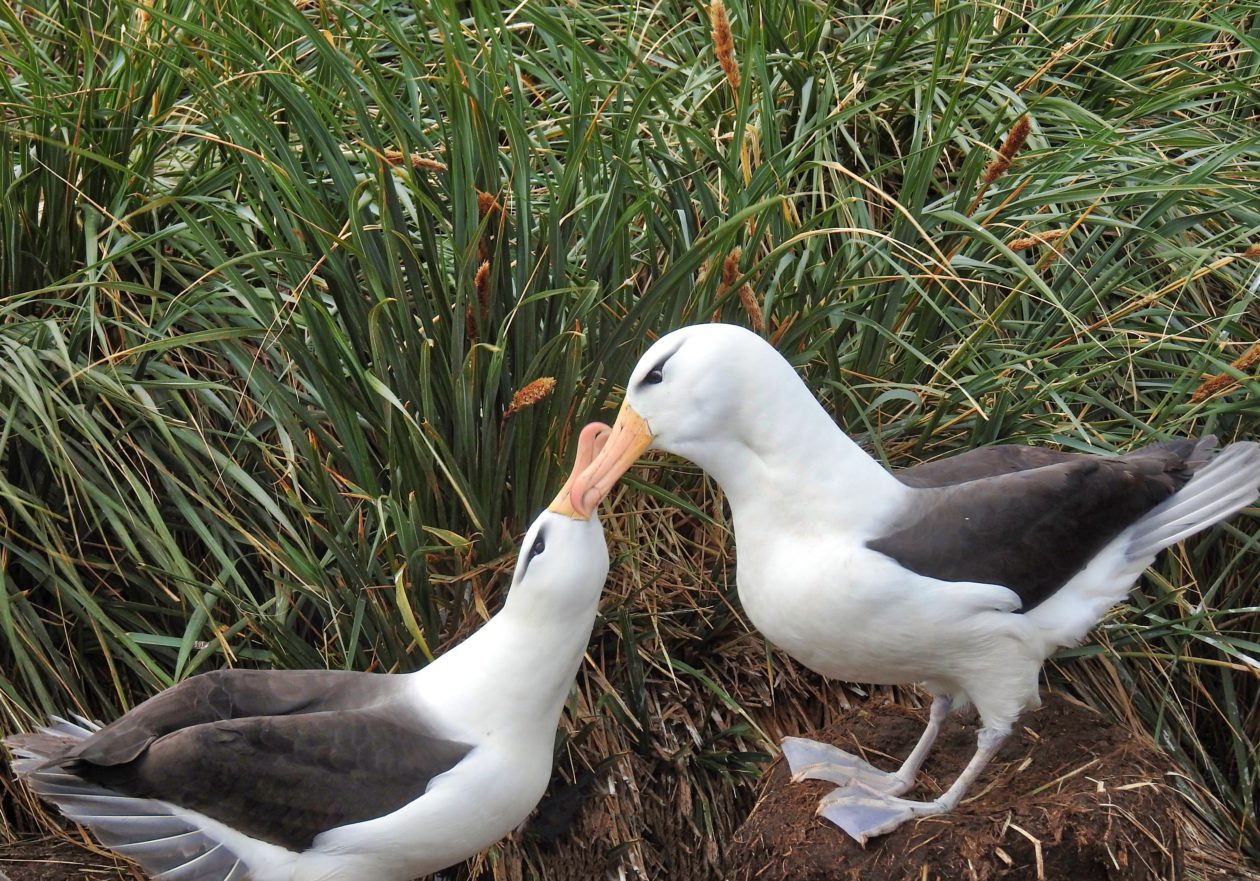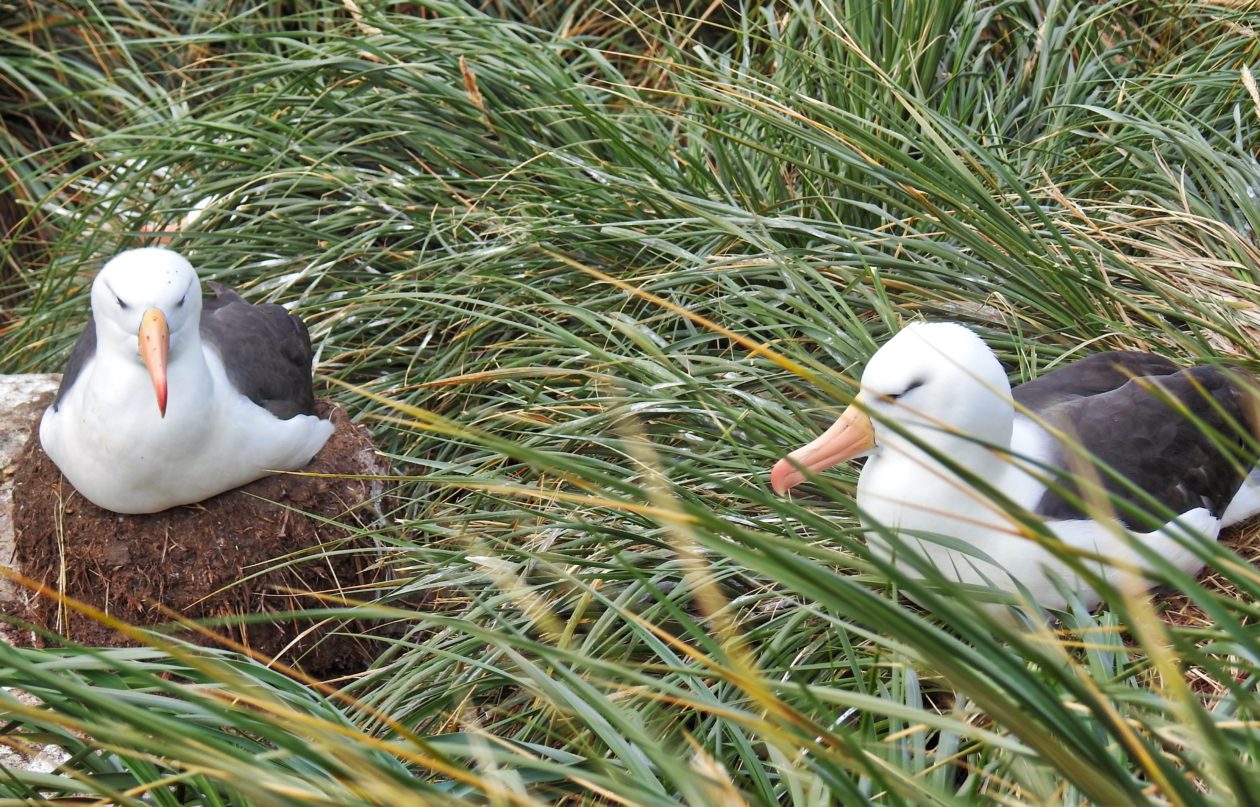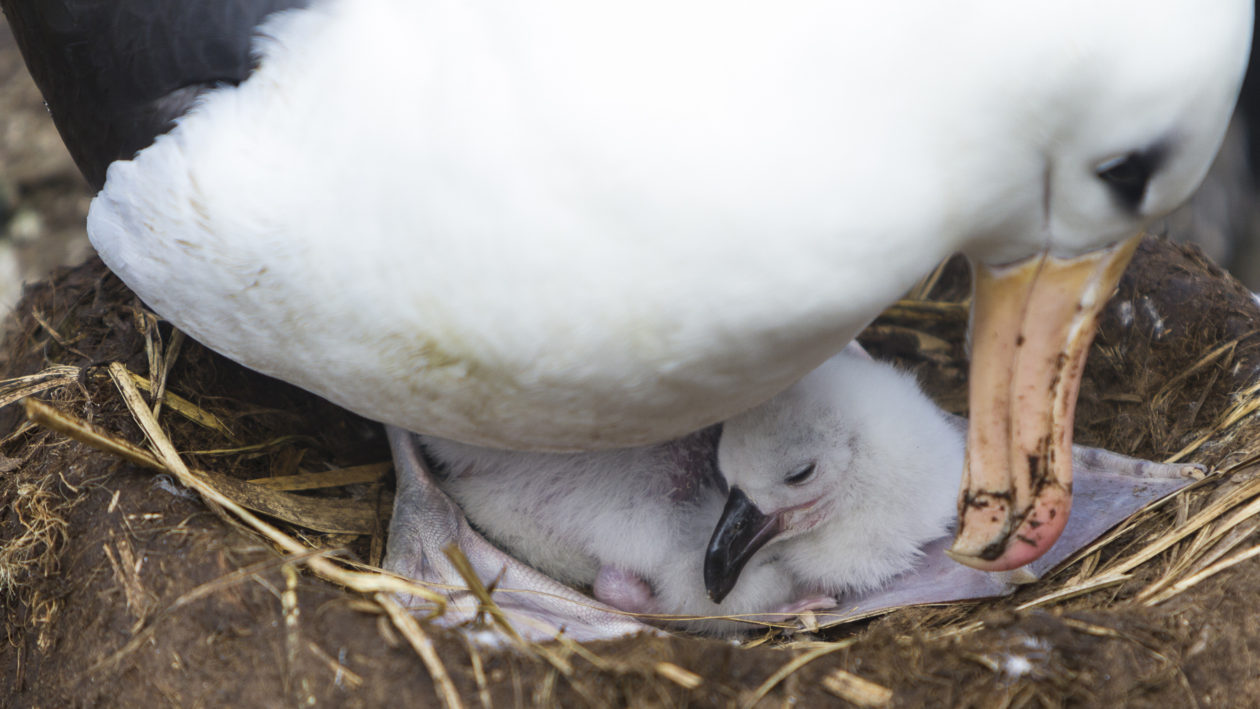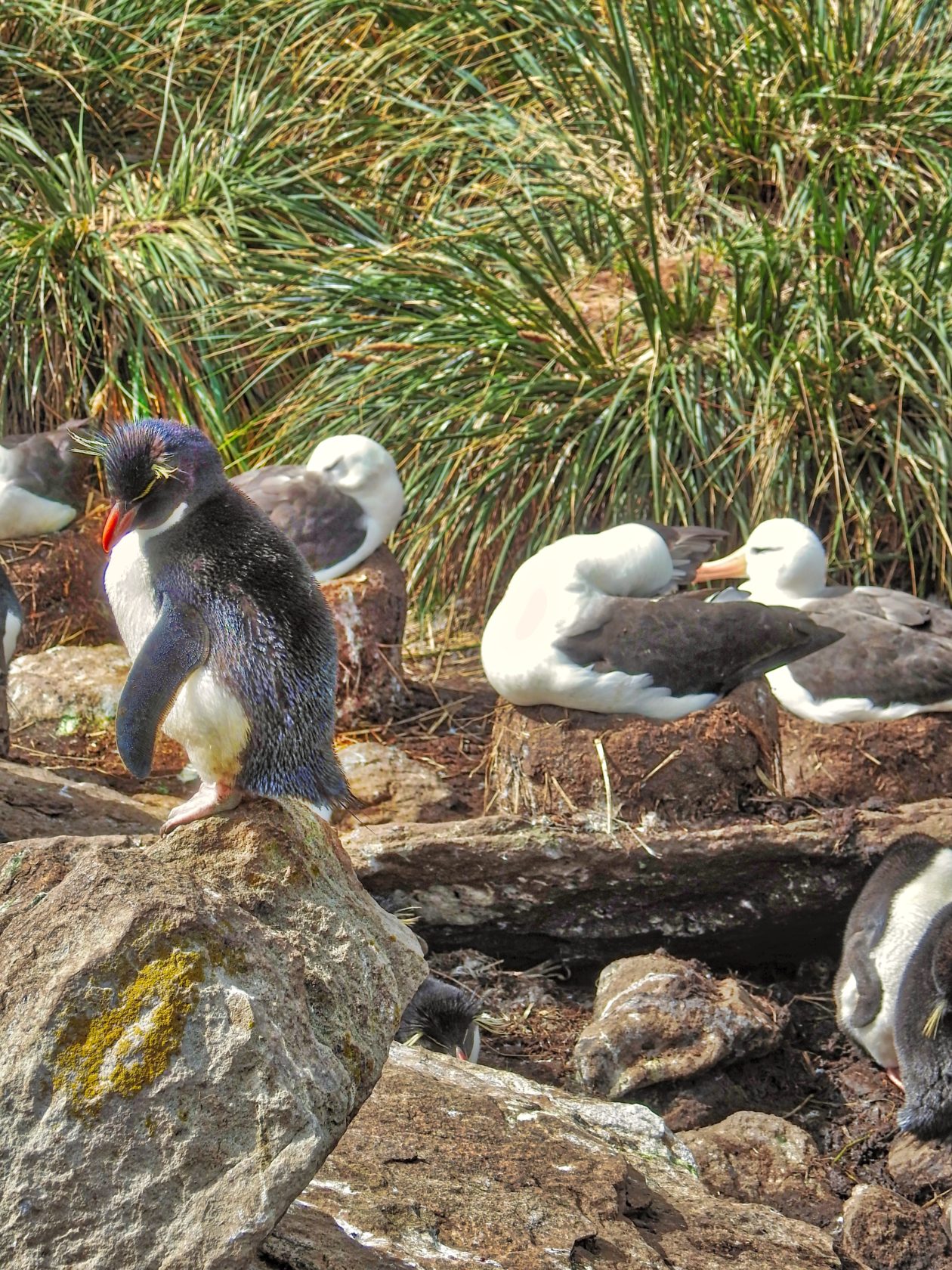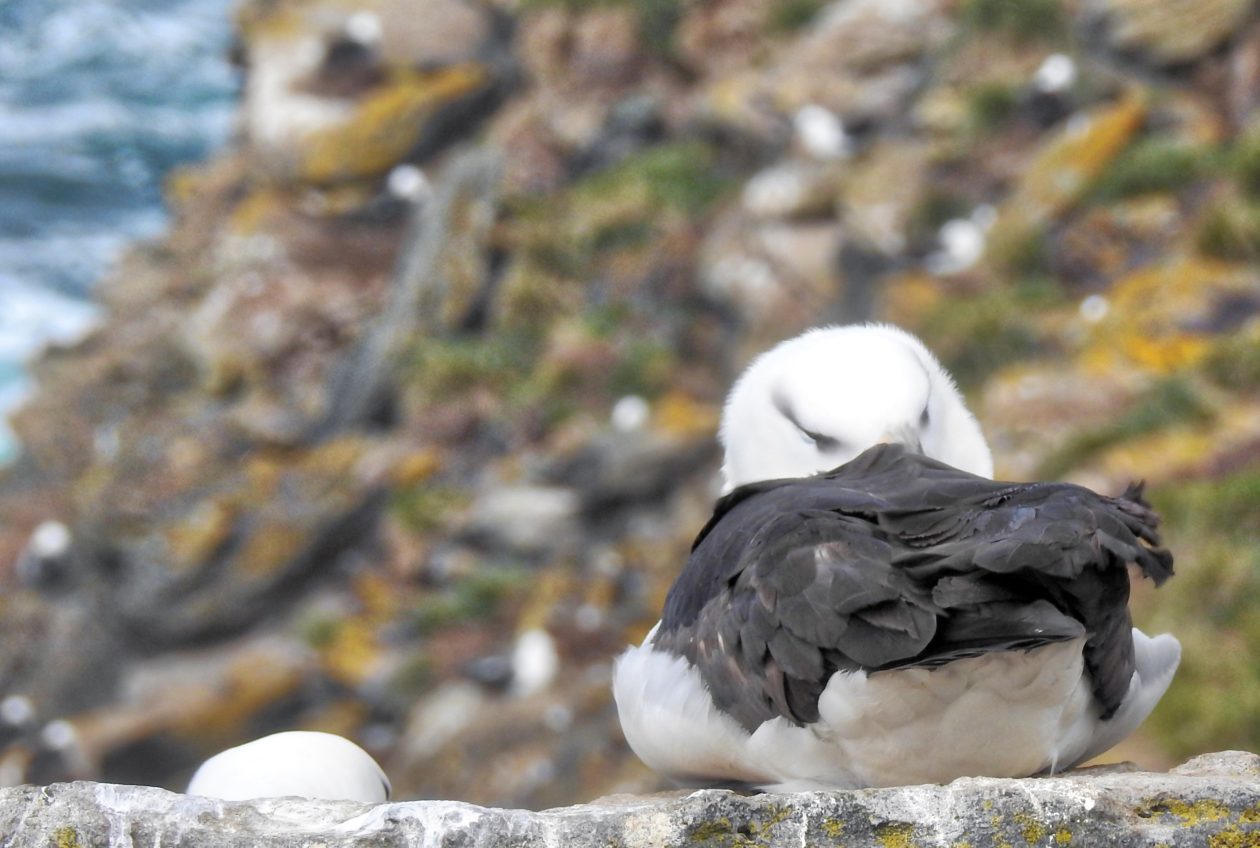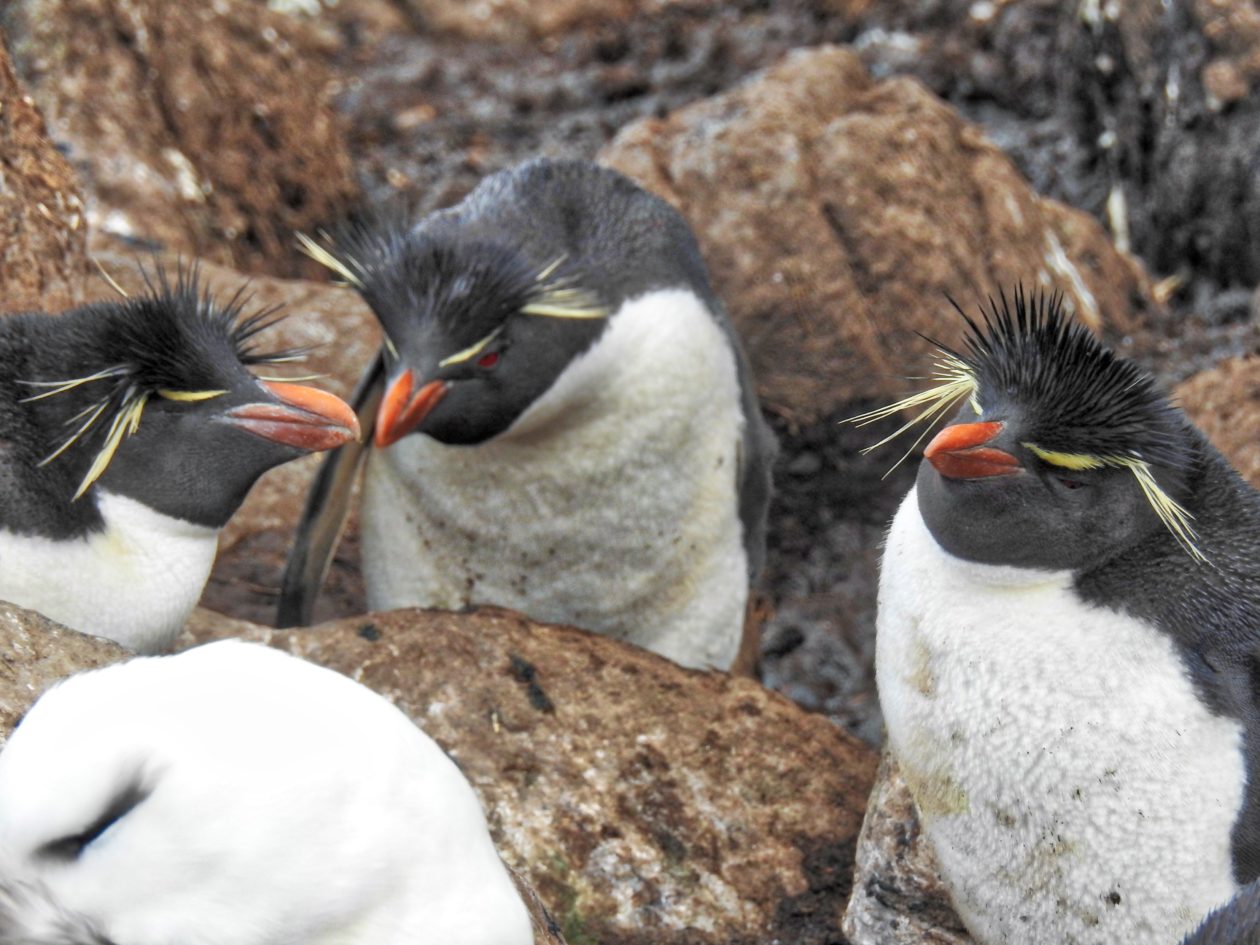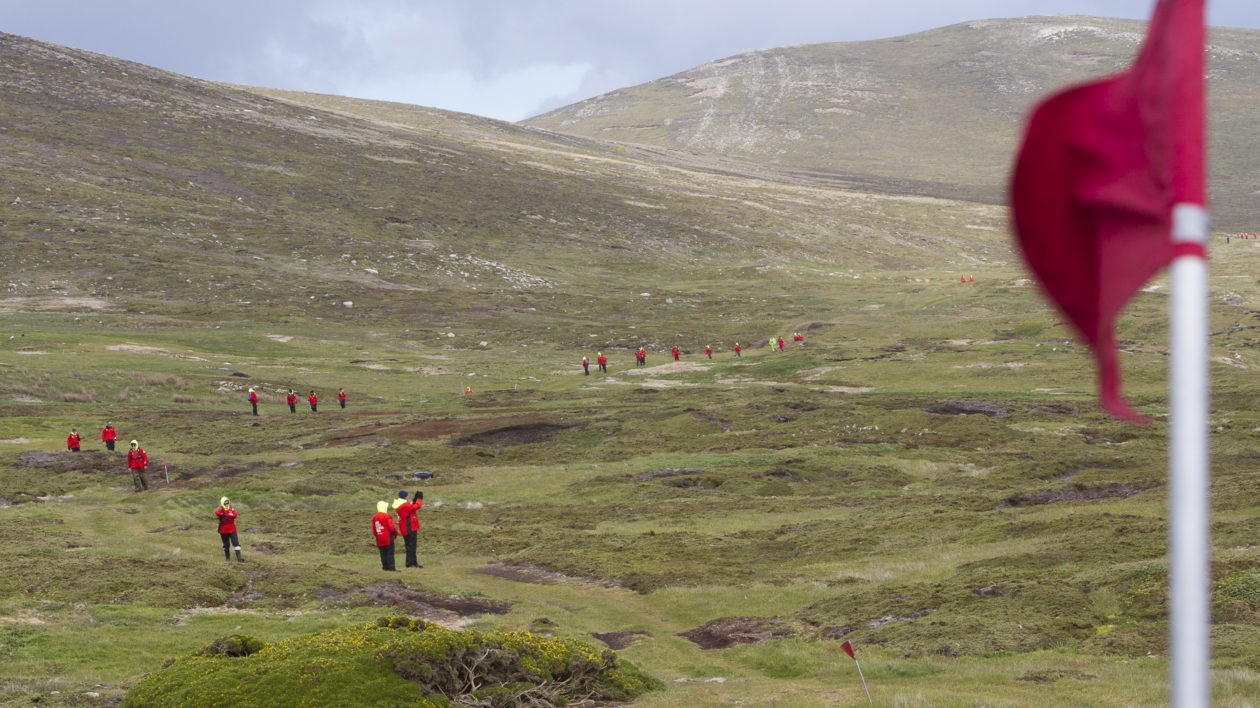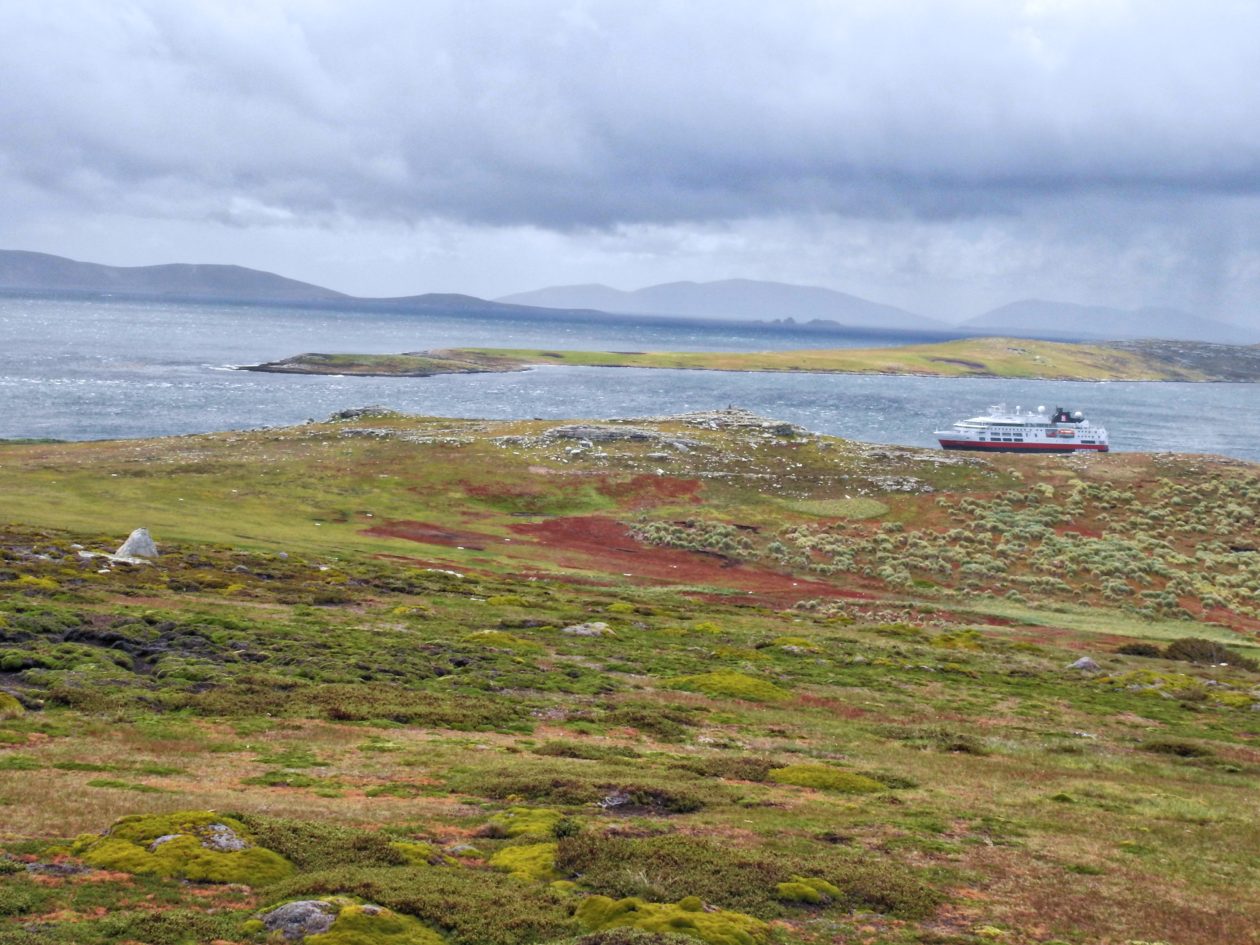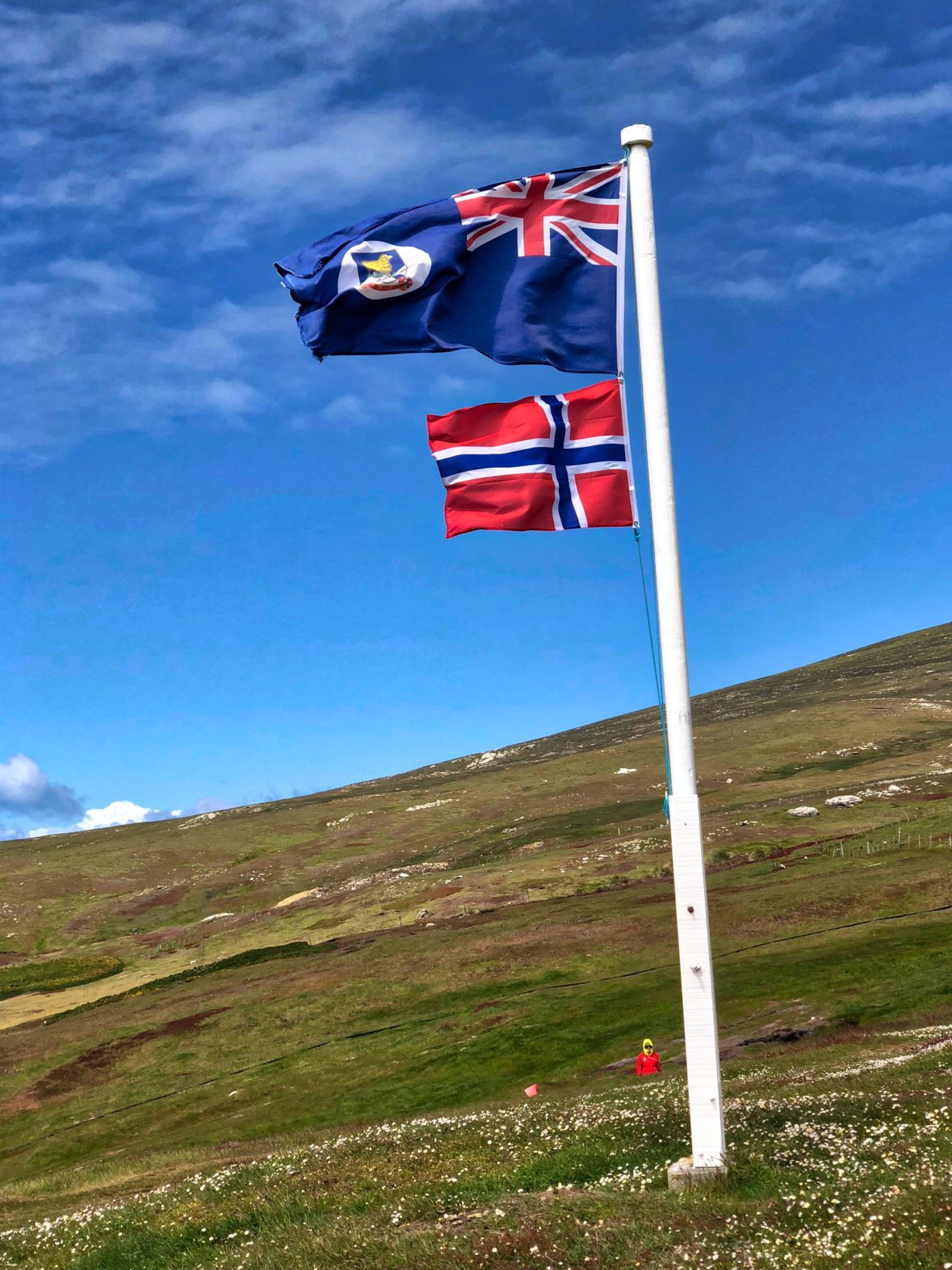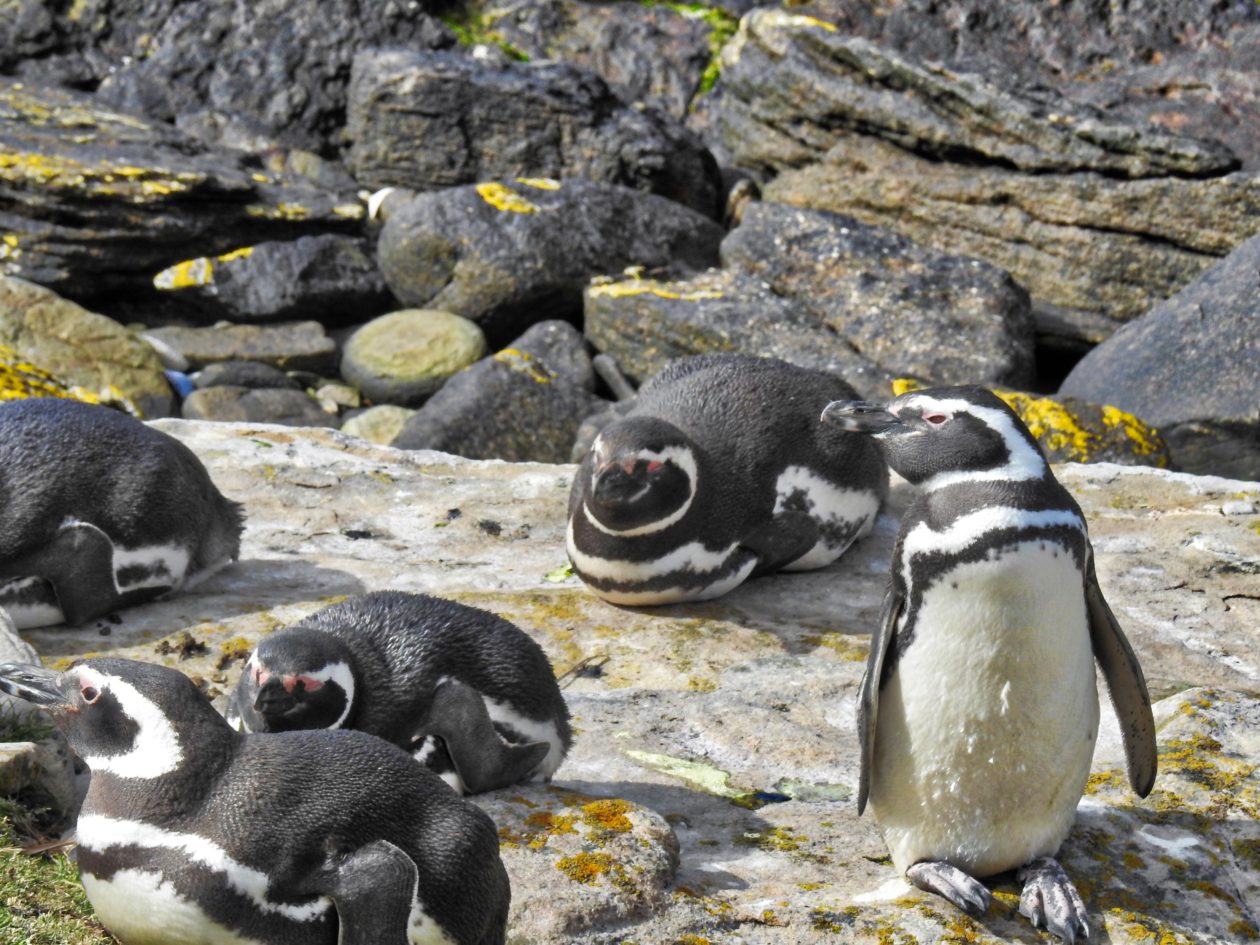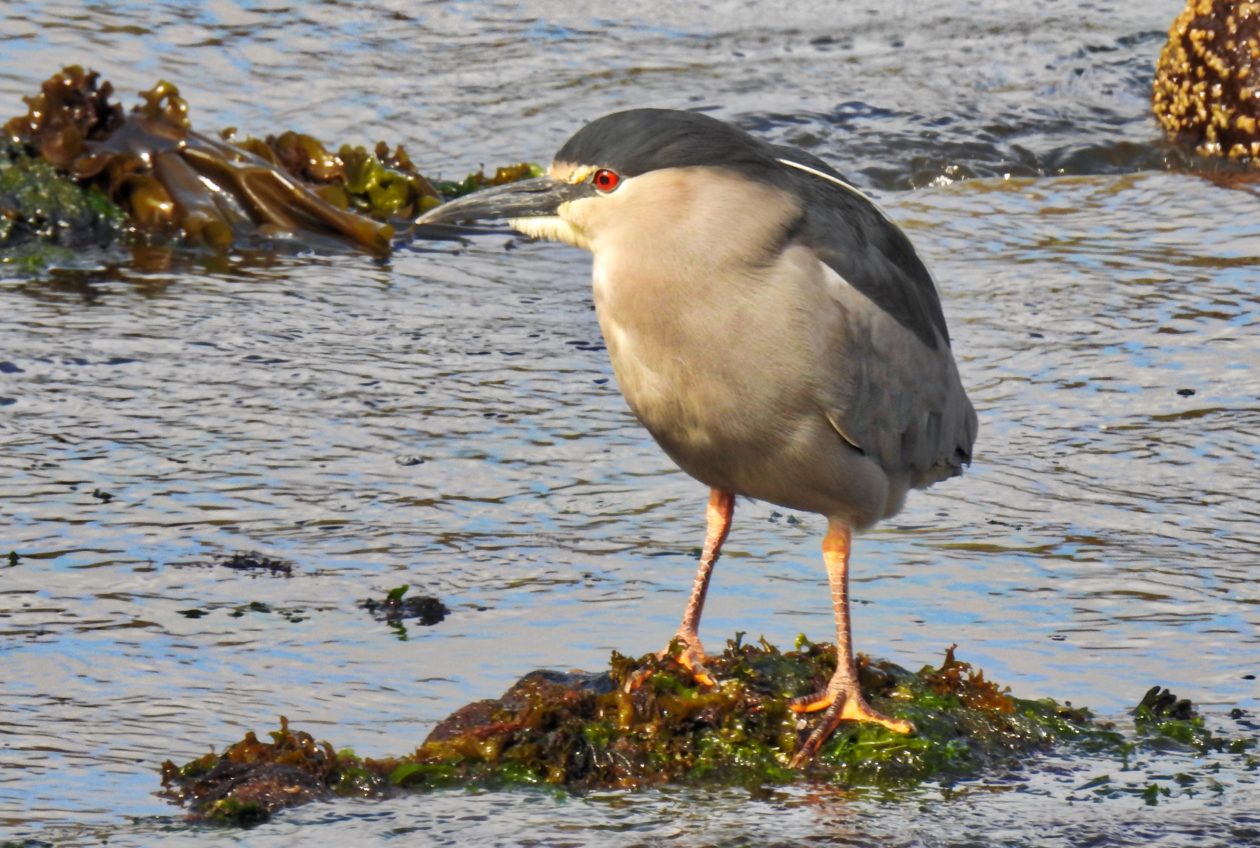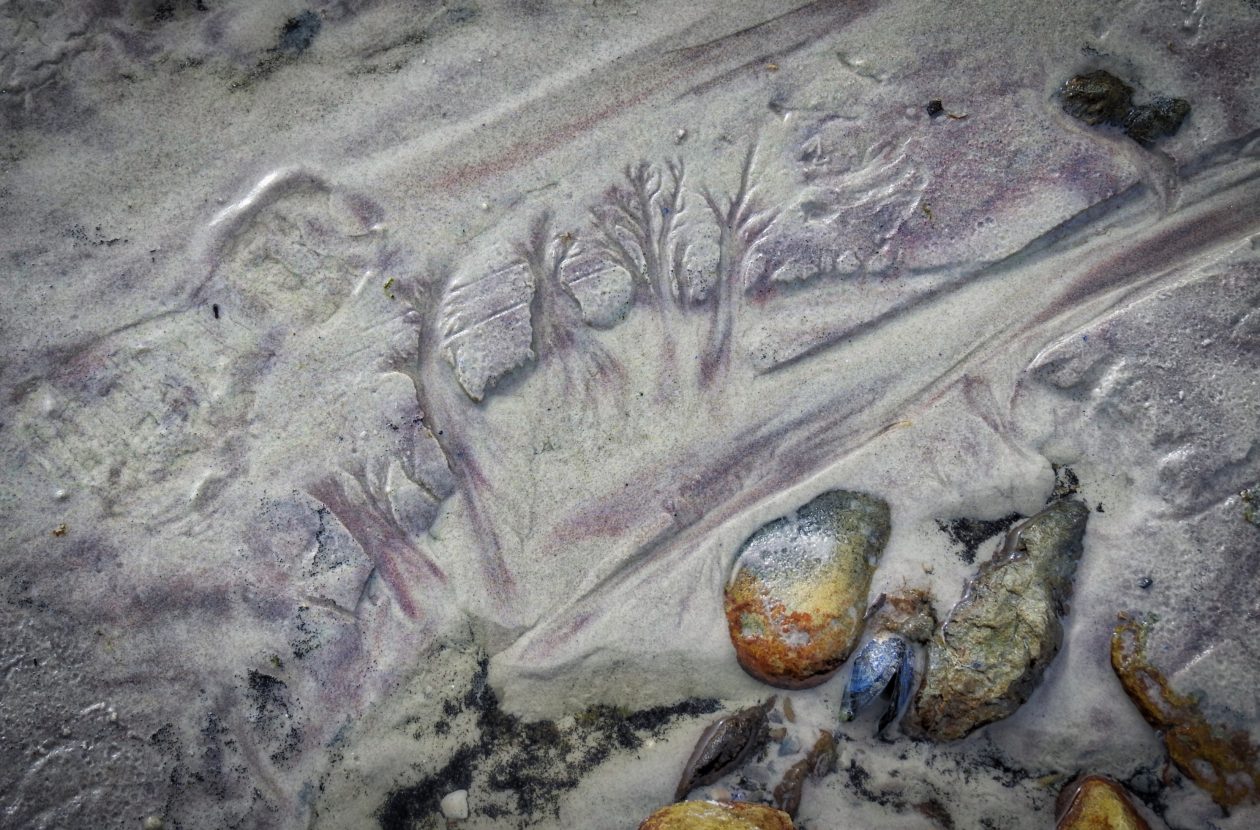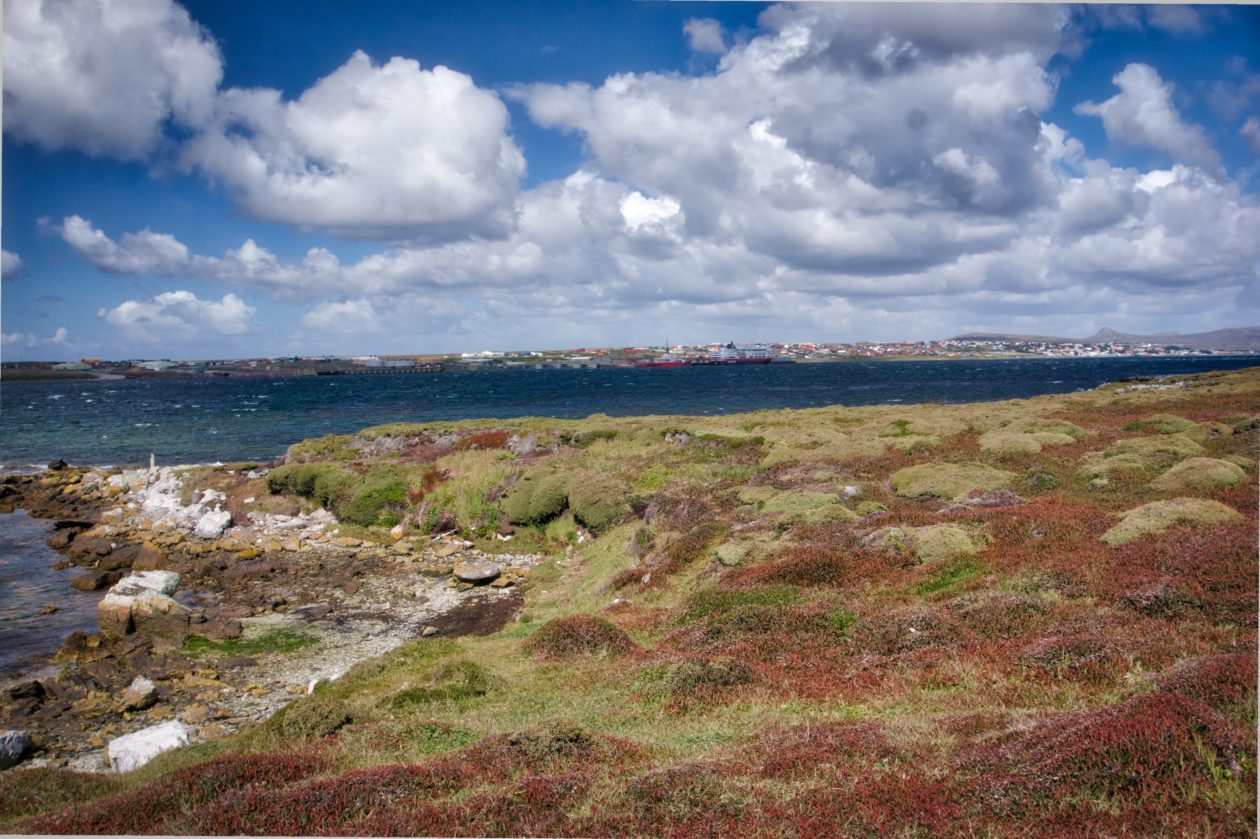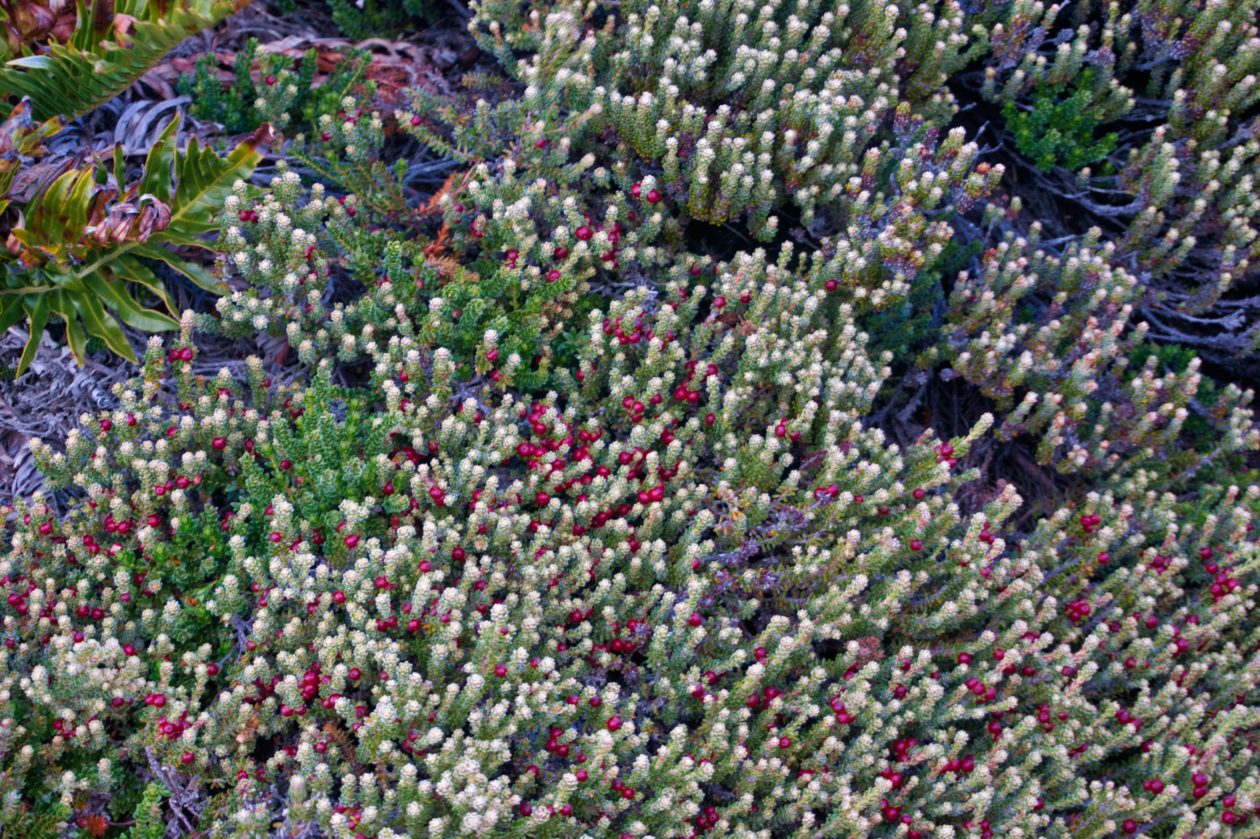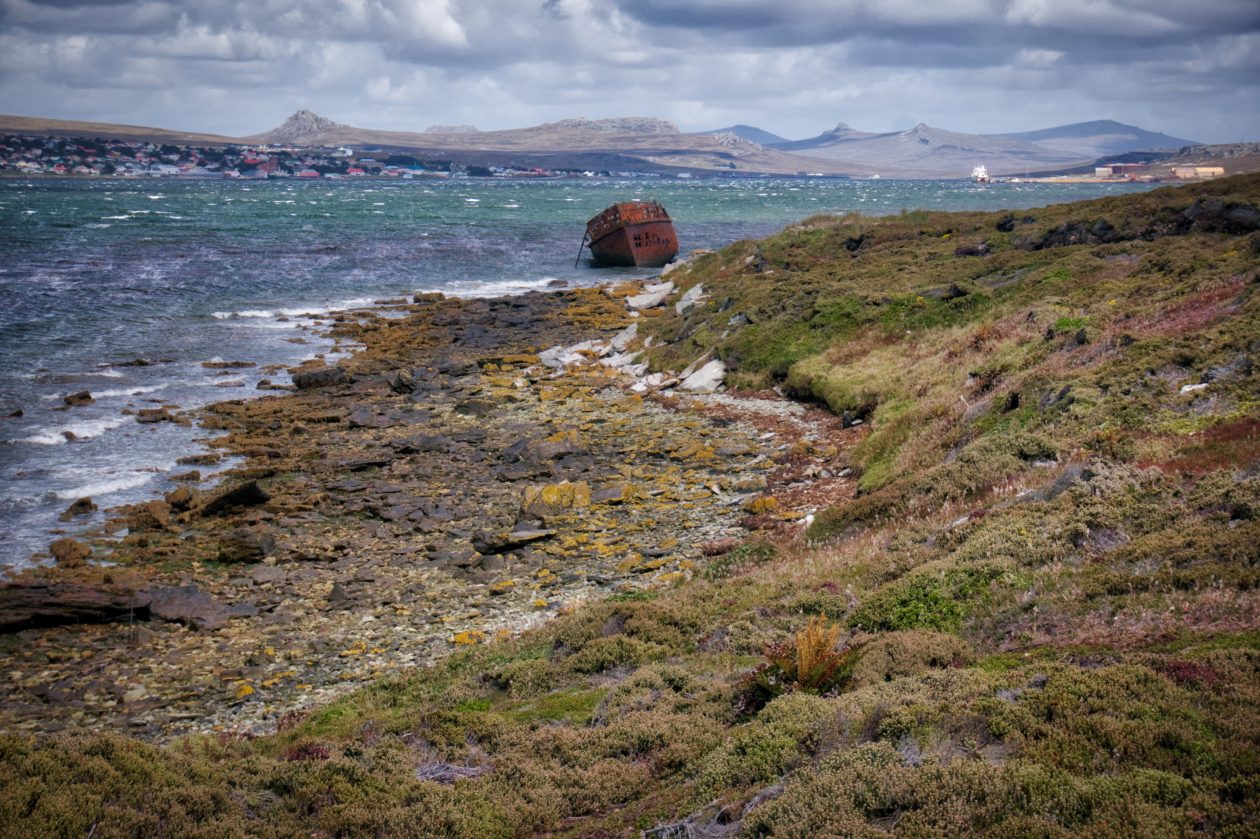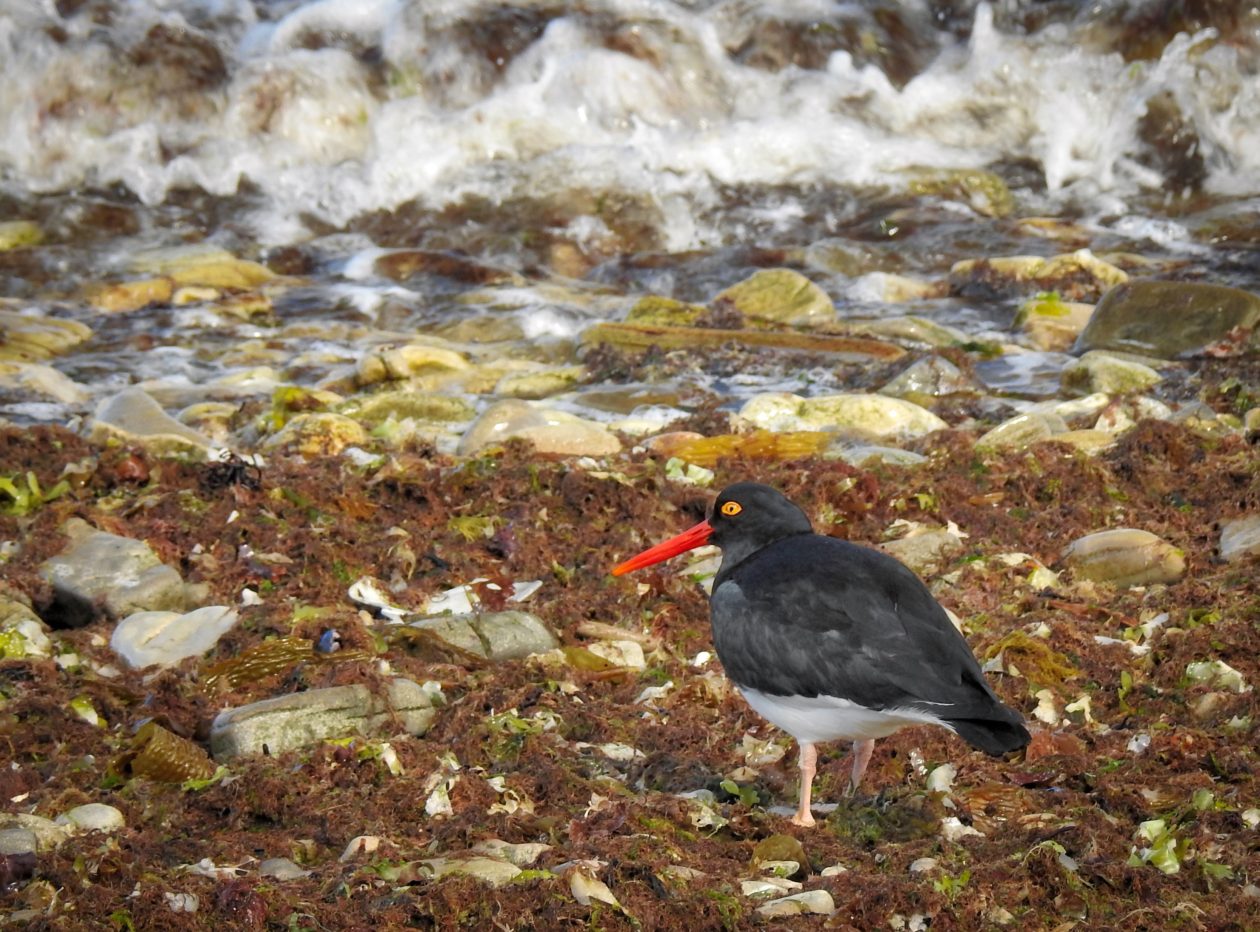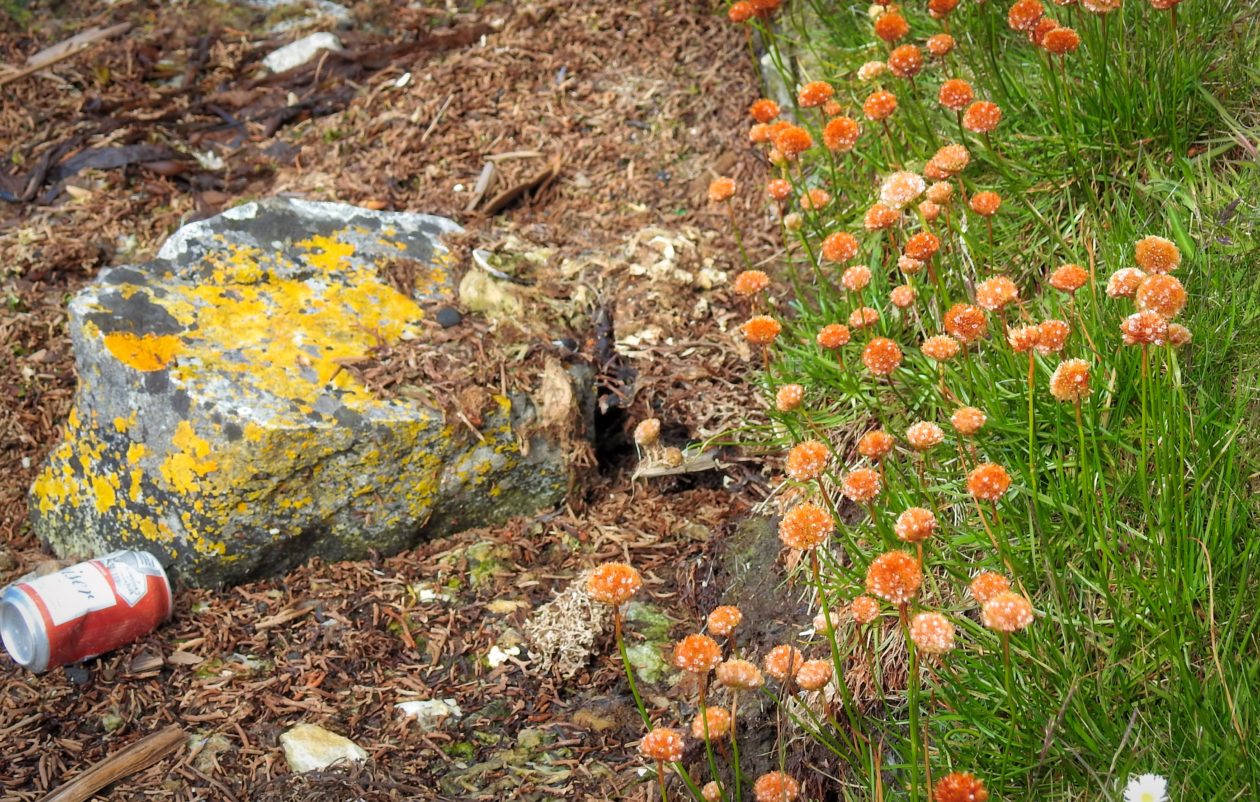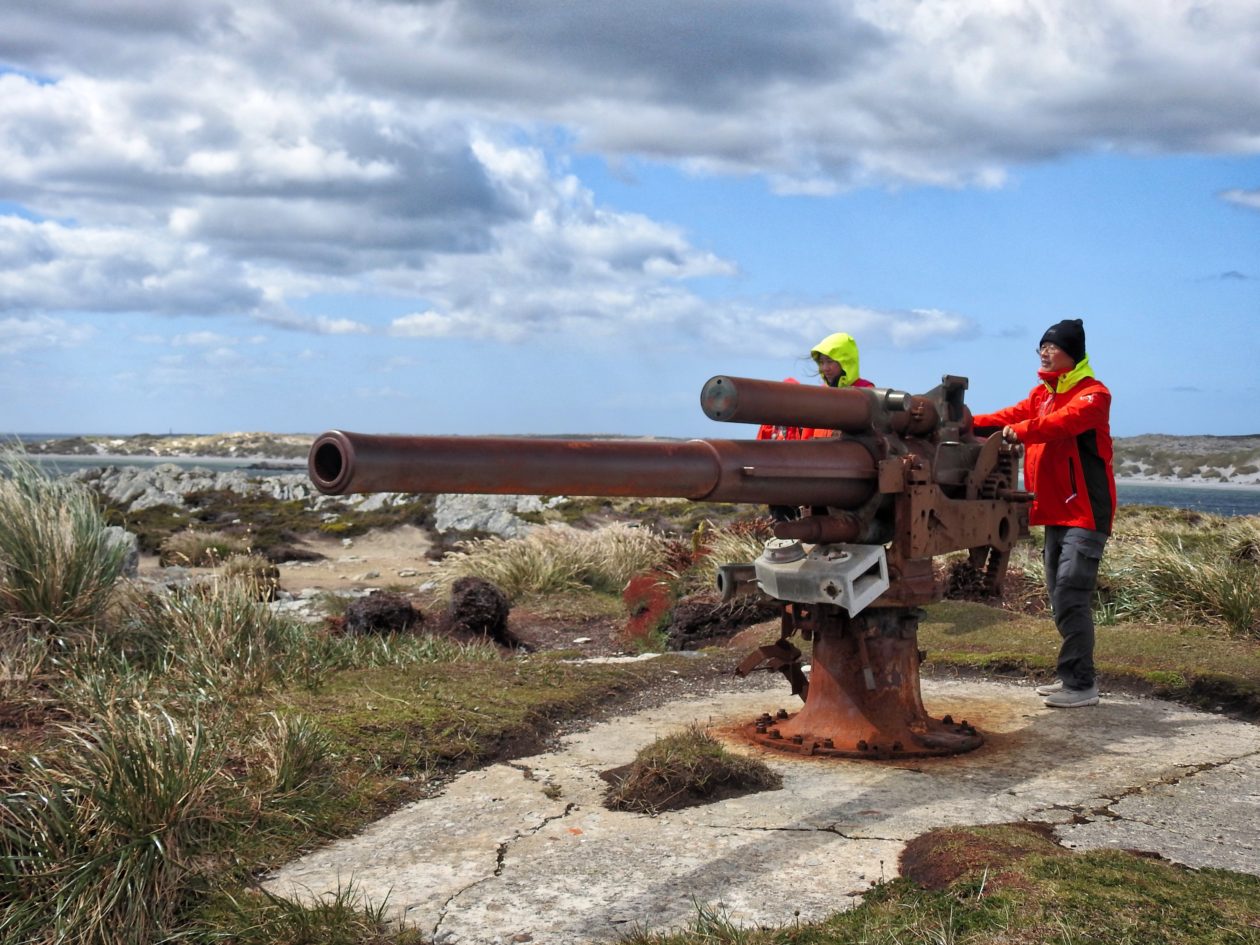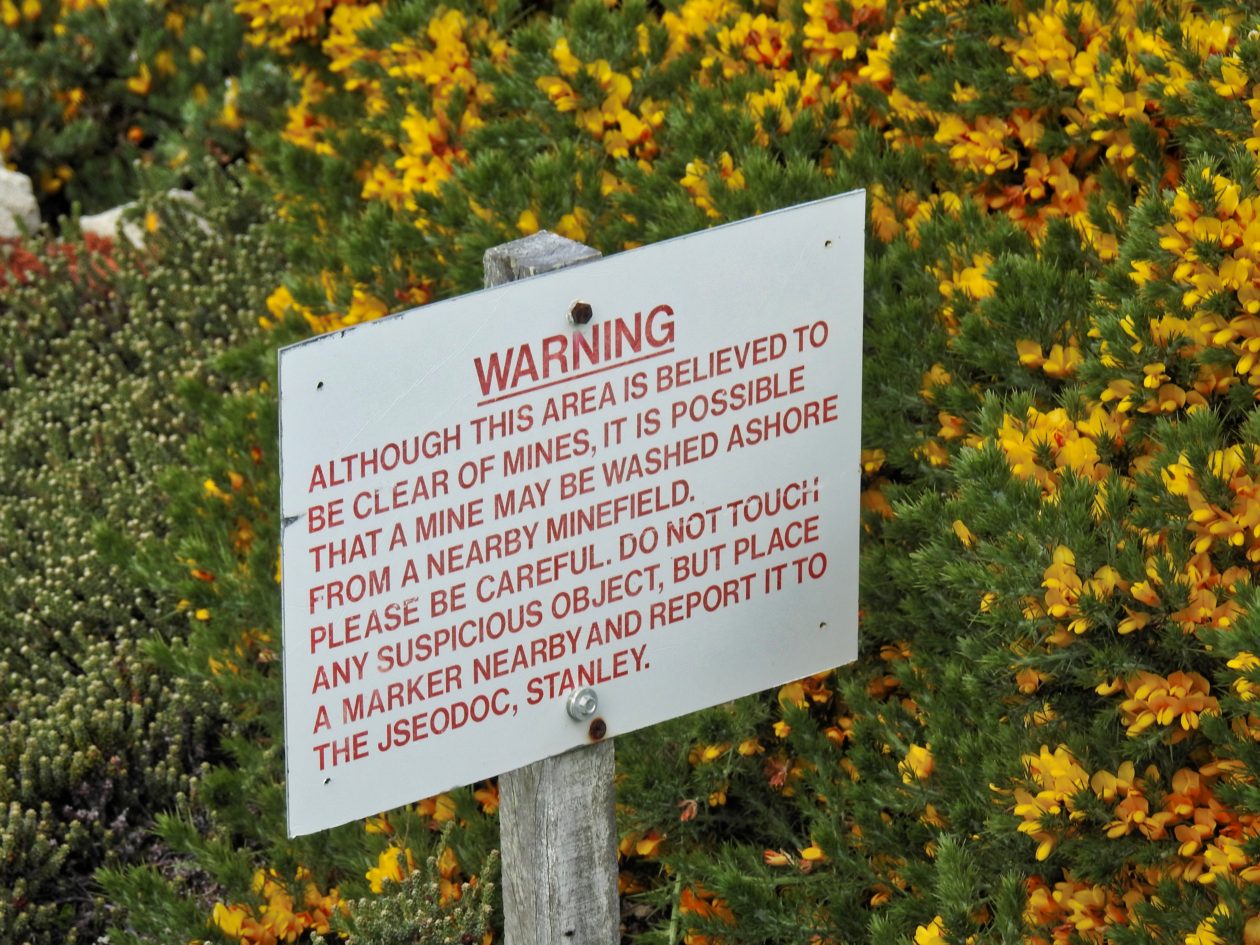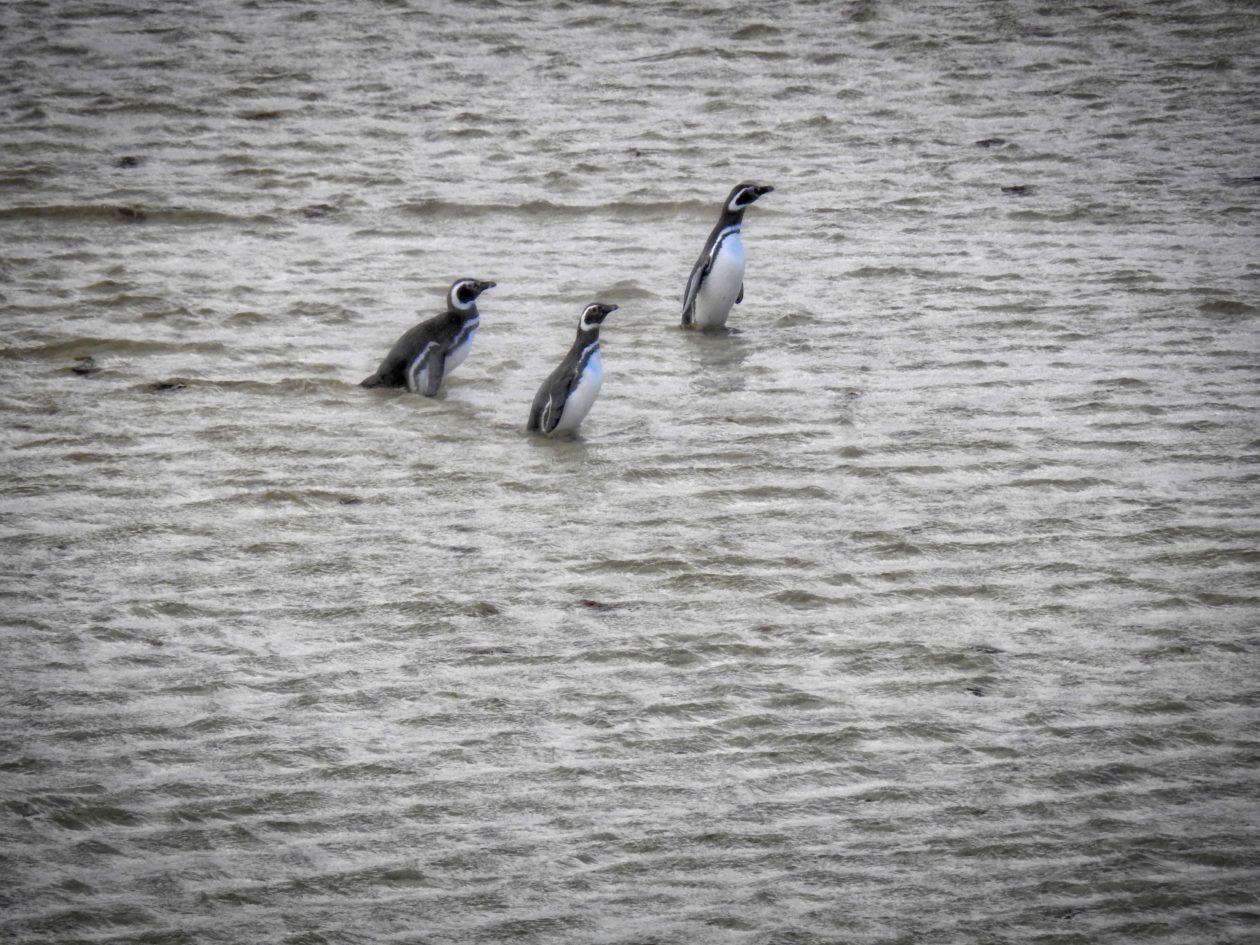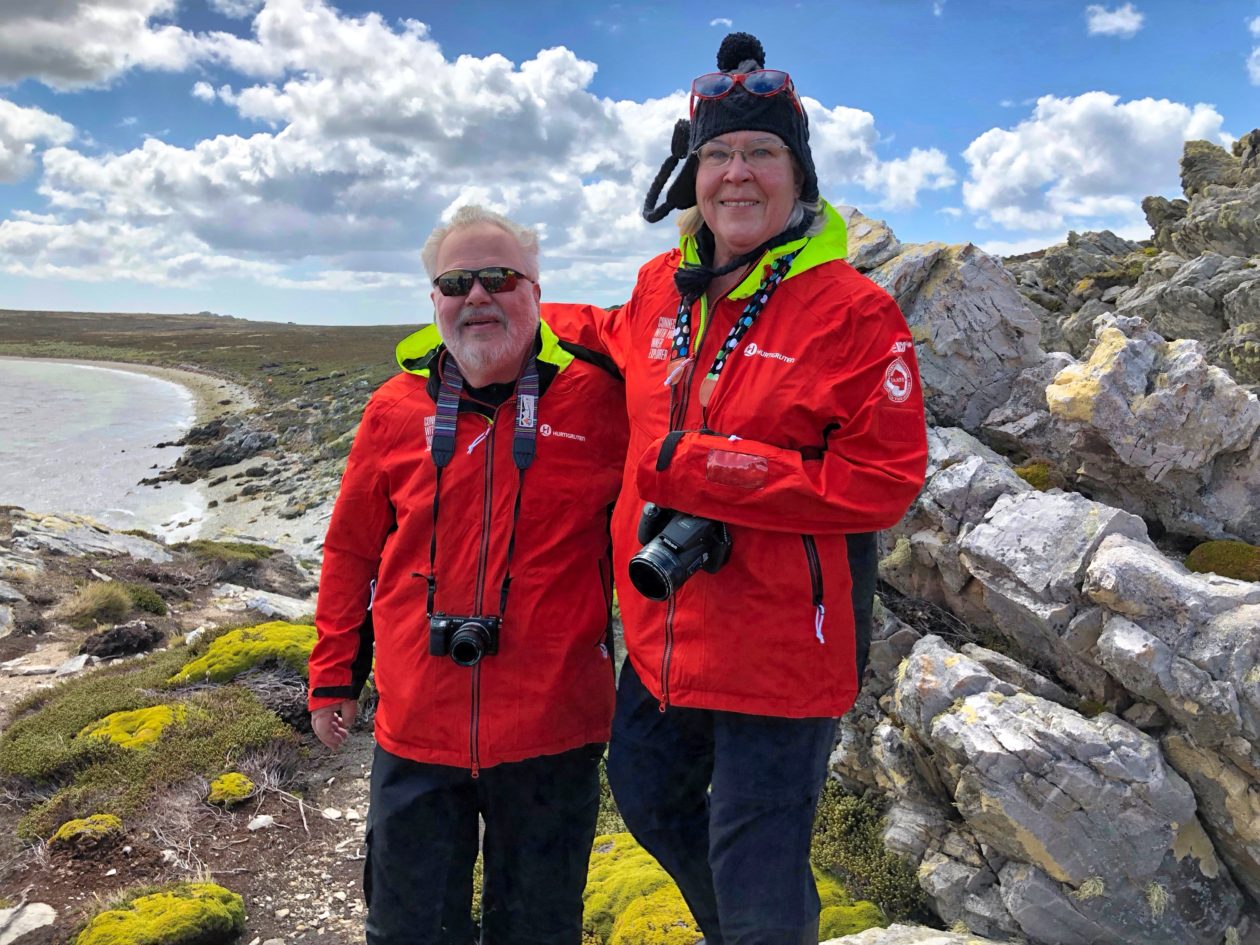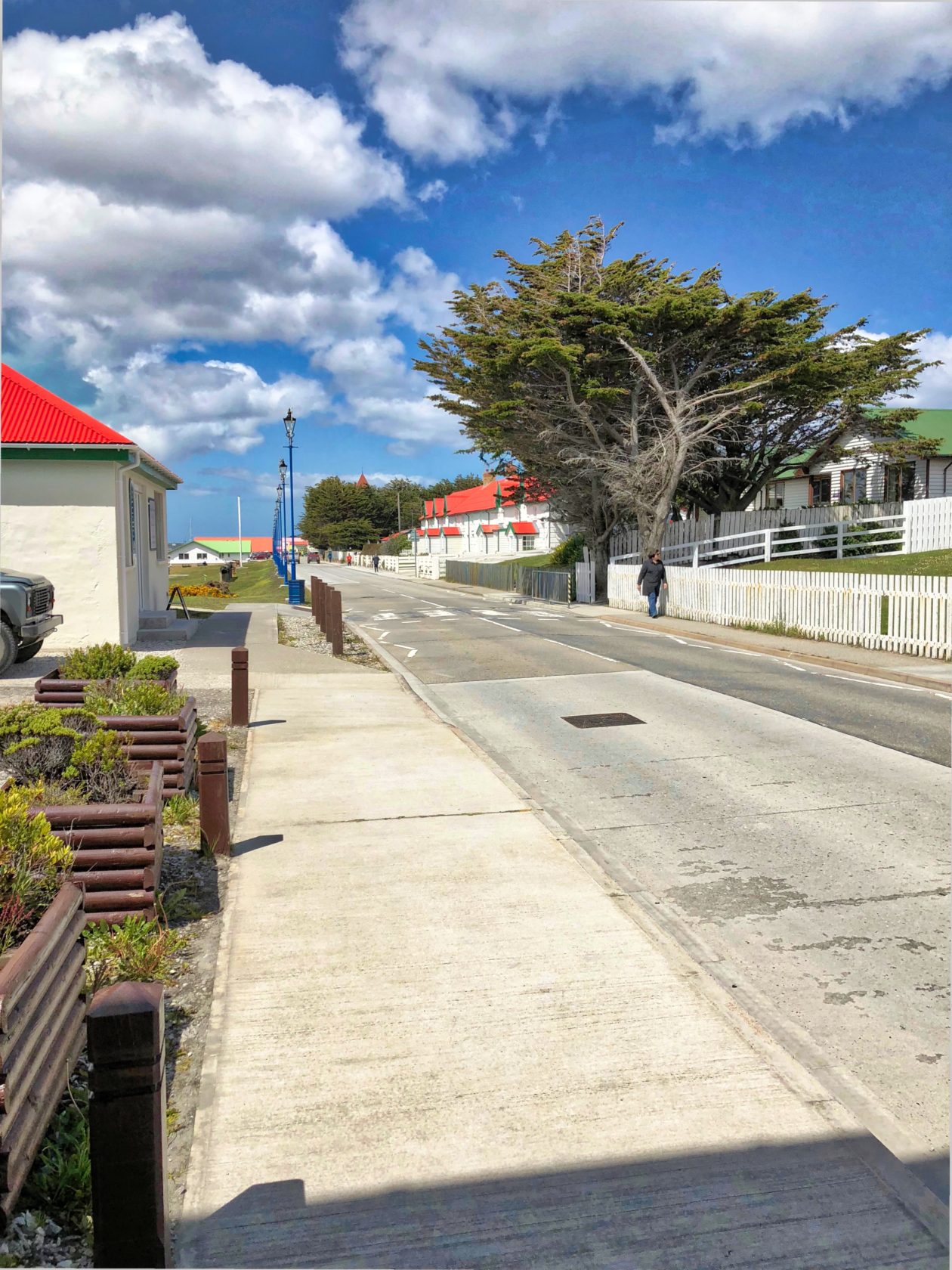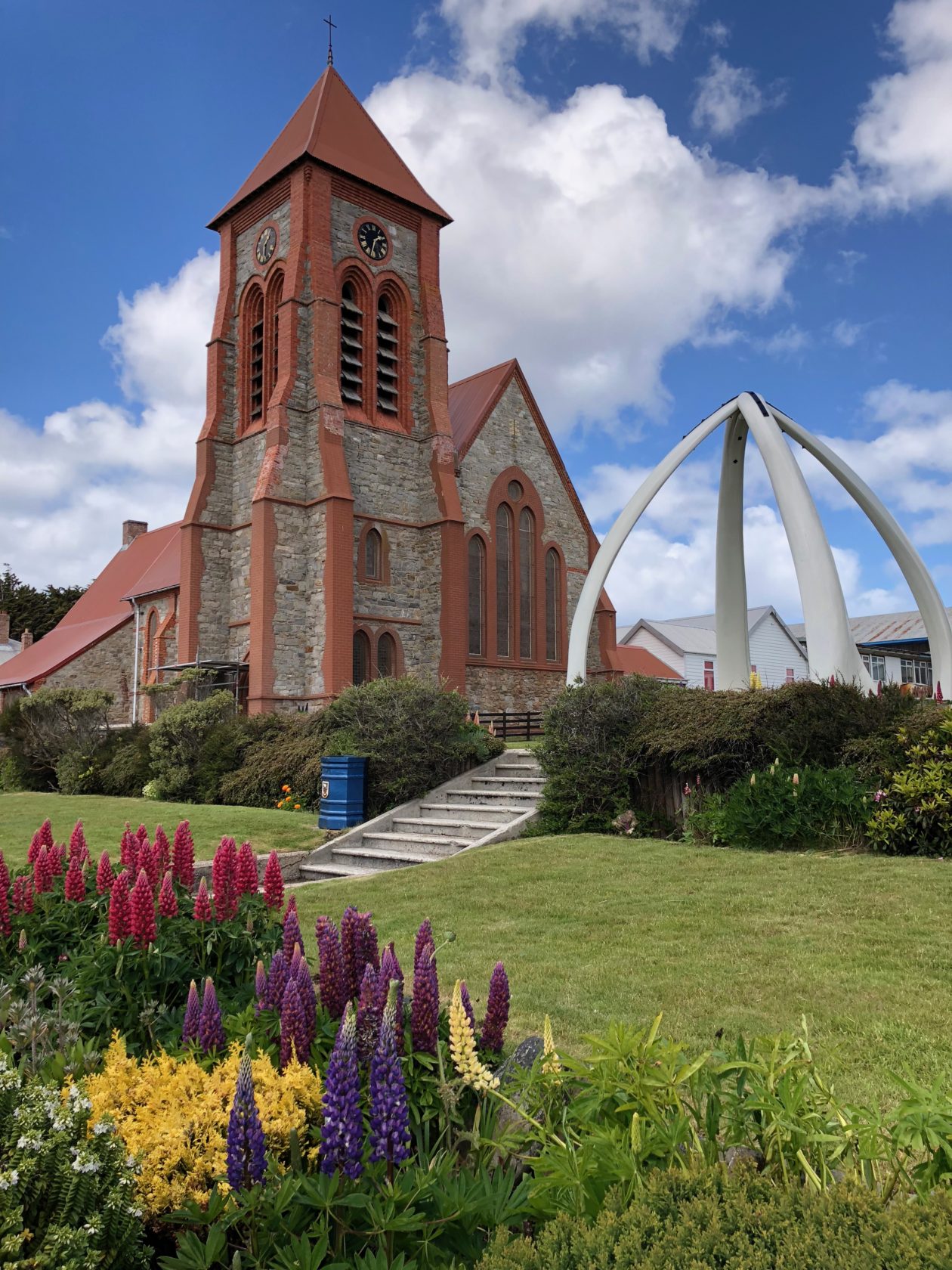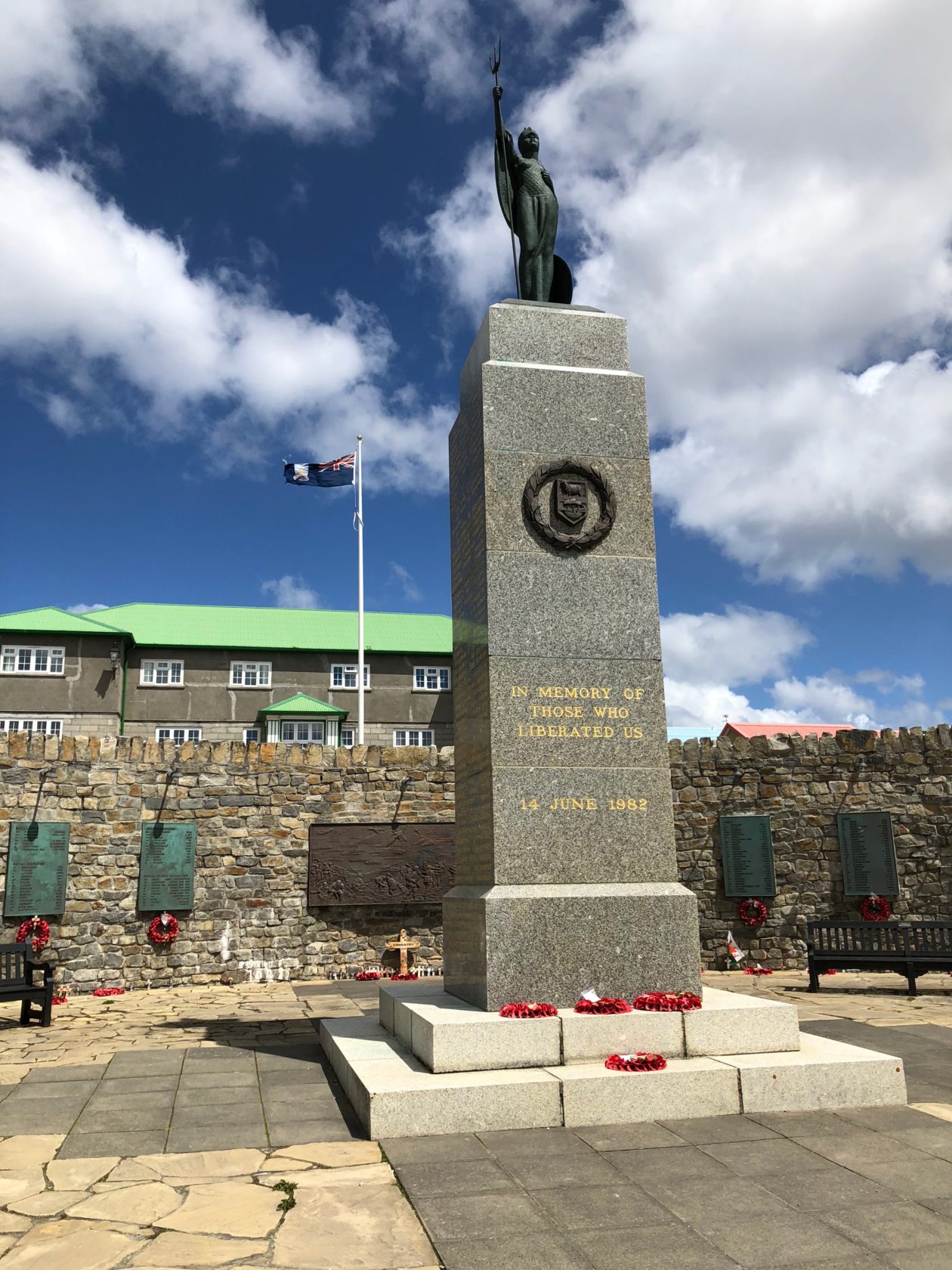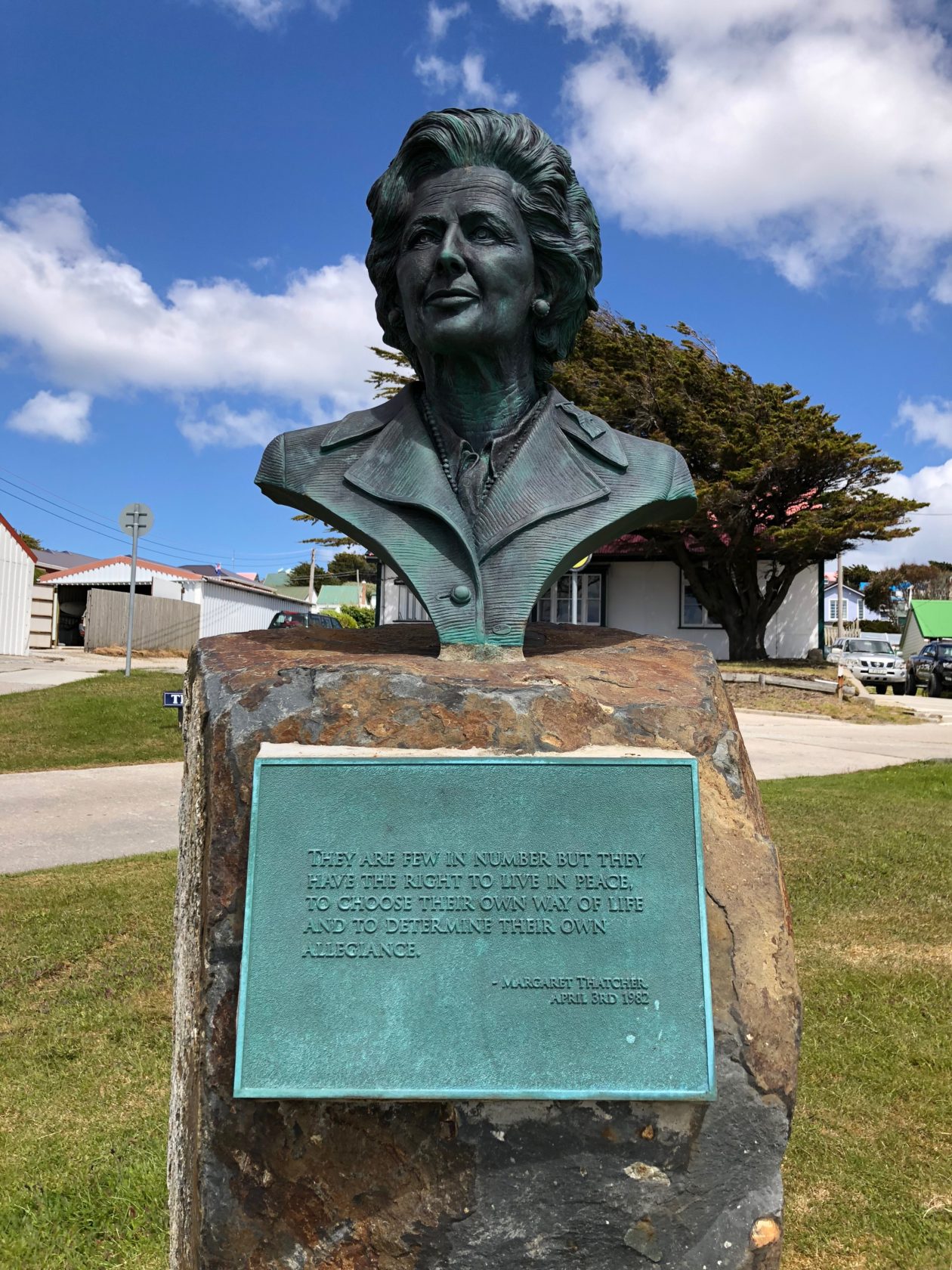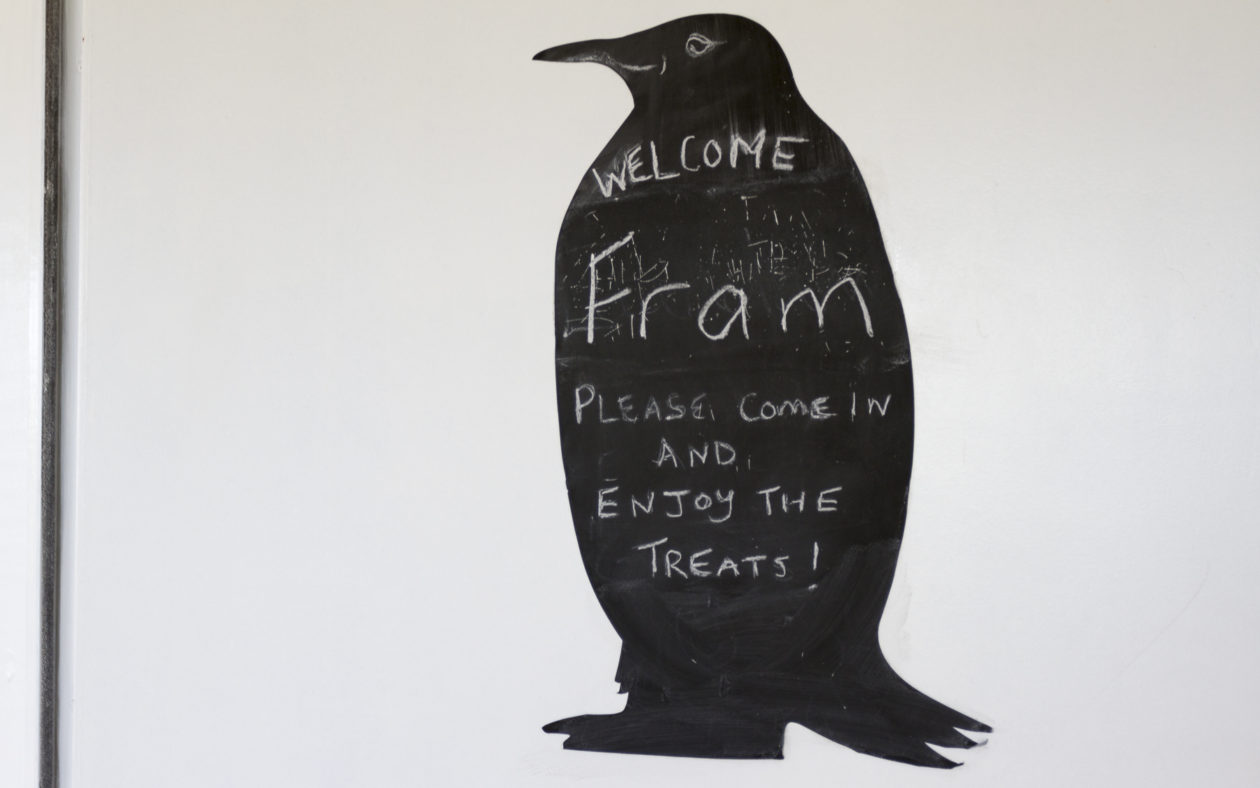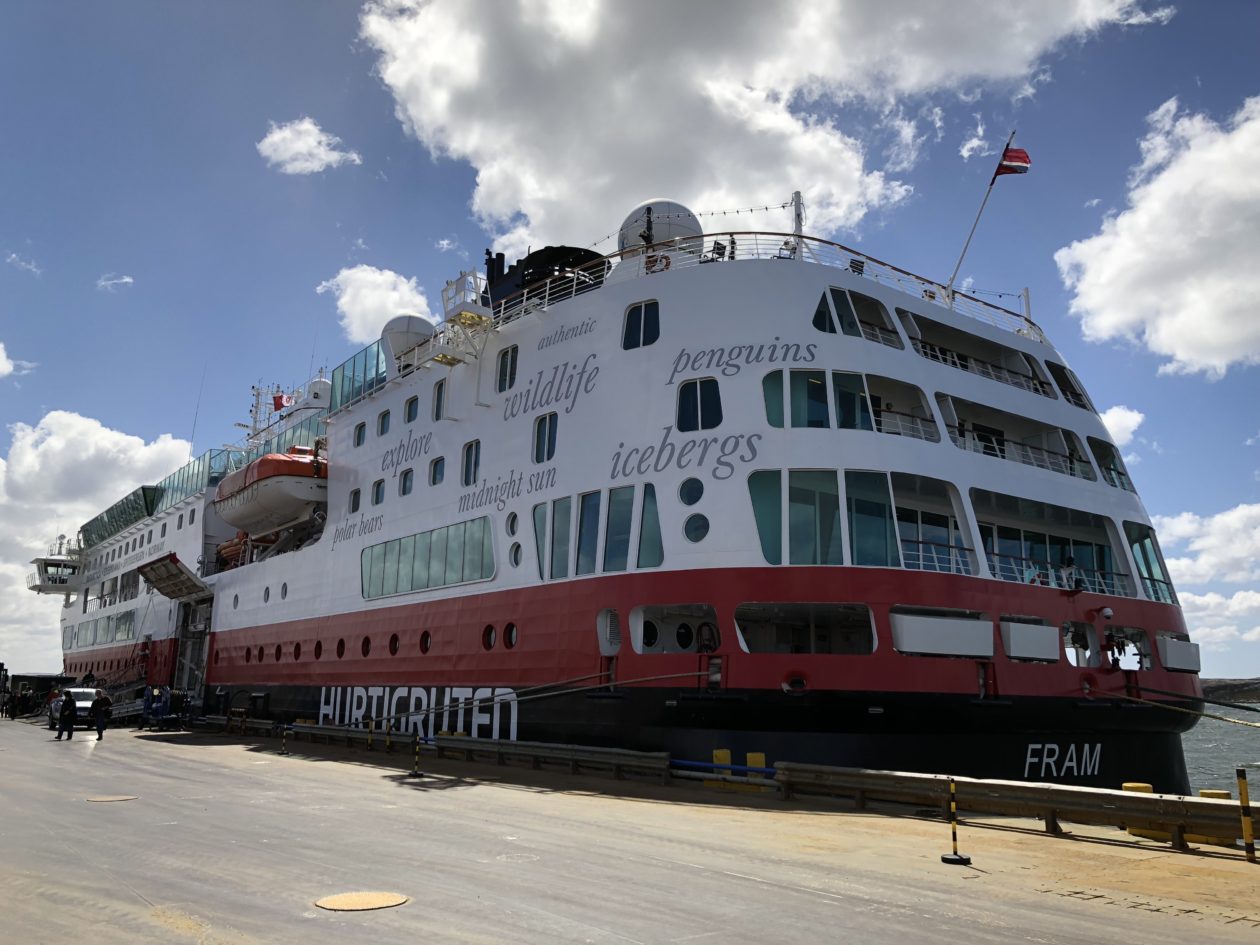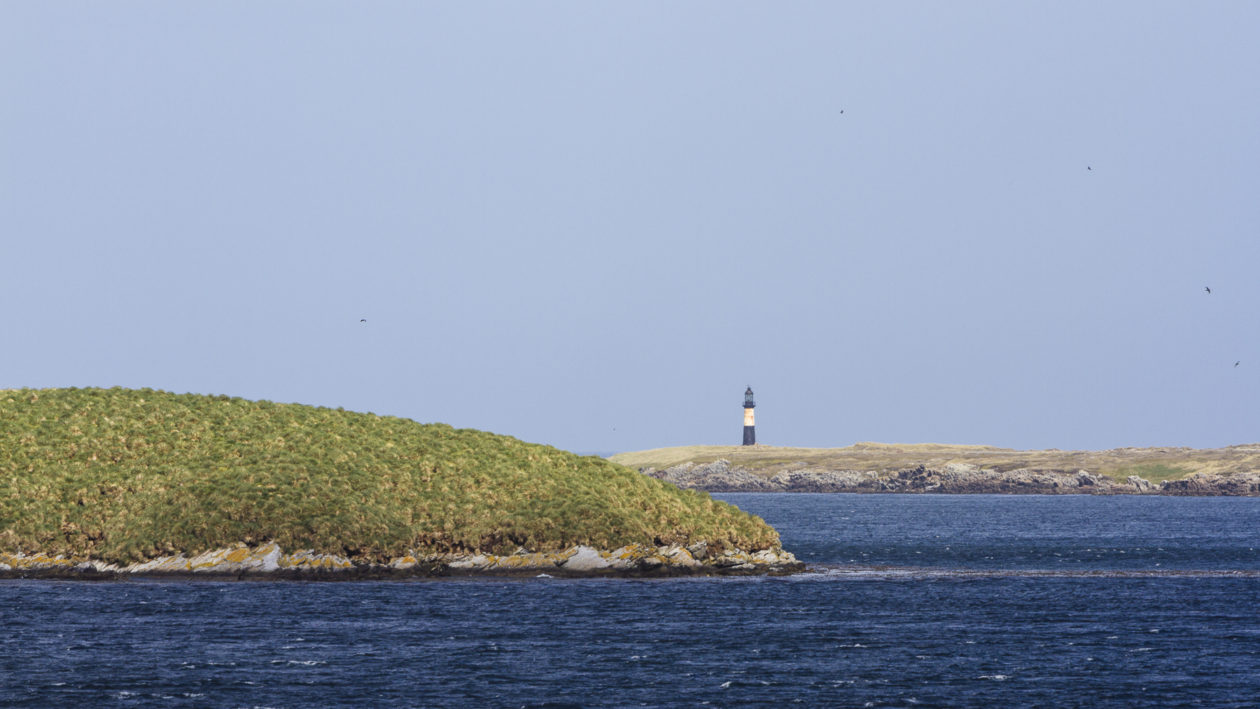- Buenos Aires, Argentina — the stopover
- Ushuaia and Tierra del Fuego National Park, Argentina
- The Falkland Islands
- South Georgia Island
- On the “road” to Antarctica, Christmas aboard the Fram, and Elephant Island
- Yankee Harbor and Deception Island, Antarctica
- Danco and Cuverville Islands, Antarctica
- Almirante Brown Station and Neko Harbor, Antarctica
- A surprise visit, Lemaire Channel, and Petermann Island
- The voyage home, New Year’s Eve, and some final thoughts
We just finished two days in the Falkland Islands — initially in the largely unpopulated islands off West Falkland and then into Stanley in East Falkland. The Falklands are interesting in many dimensions. Originally the islands broke off from the South African piece of Gondwanaland, did a pirouette, drifted a while, and finally bumped into the continental shelf and stuck! The islands had pretty much nothing native (a bit like New Zealand) and nearly everything (including trees) had to be brought in. All the islands are covered in peat, making it easier to walk on and, until the 1970s, a source of fuel for heating and cooking. It is always windy here. Yesterday, as we were hiking near Stanley, the sustained winds were 35 mph, with gusts much higher. I have to say that the constant wind would get old after a while, but today a third of their power comes from it.
Anyway, on the first day, we visited two mostly uninhabited islands (West Point and Carcass) to visit a rookery for the Black-Brown Albatrosses, Rockhopper Penguins, and Magellanic Penguins. This routine was pretty consistent for the cruise — a landing at one place during the morning and then cruise for a while and do a landing at a second place during the afternoon. West Point and Carcass are windswept islands on the western side of the Falklands. West Point is only about 6 square miles, but has to have some of the most dramatic coastal scenery in the Falklands. It was originally called Albatross Island and it is easy to see why — the rookeries were huge and along the rugged coast. We got to meet the current owners (Roddy and Lily Napier) who run a sheep farm here as well as serving as hosts for the tourists who visit there.
Carcass Island (yeah, it sounds pretty creepy but was actually named for the British ship that first surveyed it) is a little larger (10 km) with a lovely beach and small village with a boathouse, shed and store. Many of the passengers actually stopped for tea and cakes at the store — hard to be genteel when you are wearing your full regalia! Here we saw our first Magellanic penguins. I sat within 20 feet of them for about a half hour and watched their social structure at work. It was great!
On the second day, we visited Stanley, where we enjoyed a great nature walk and a stroll through the streets. Nice people. It’s a bit puzzling to me that the Falklands have been seen as strategically important to so many nations for so long. At various points in its history, they have been controlled by indigenous peoples, the French, the Brits and, of course the Spanish/Latin American. Great battles were fought here during WW I, WW II and, of course, the Falklands War with Argentina in 1982. It’s not like there are lots of natural resources (although there are some oil/mineral exploration). Sheep/wool was a mainstay, but the bottom fell out of that market. Today it is all about tourism and their fisheries (think squid!). Tourism can be a little overwhelming for them. With a population of 3000 total, they have had up to two mega cruise ships visit simultaneously, disgorging up to 6000 passengers — yikes!
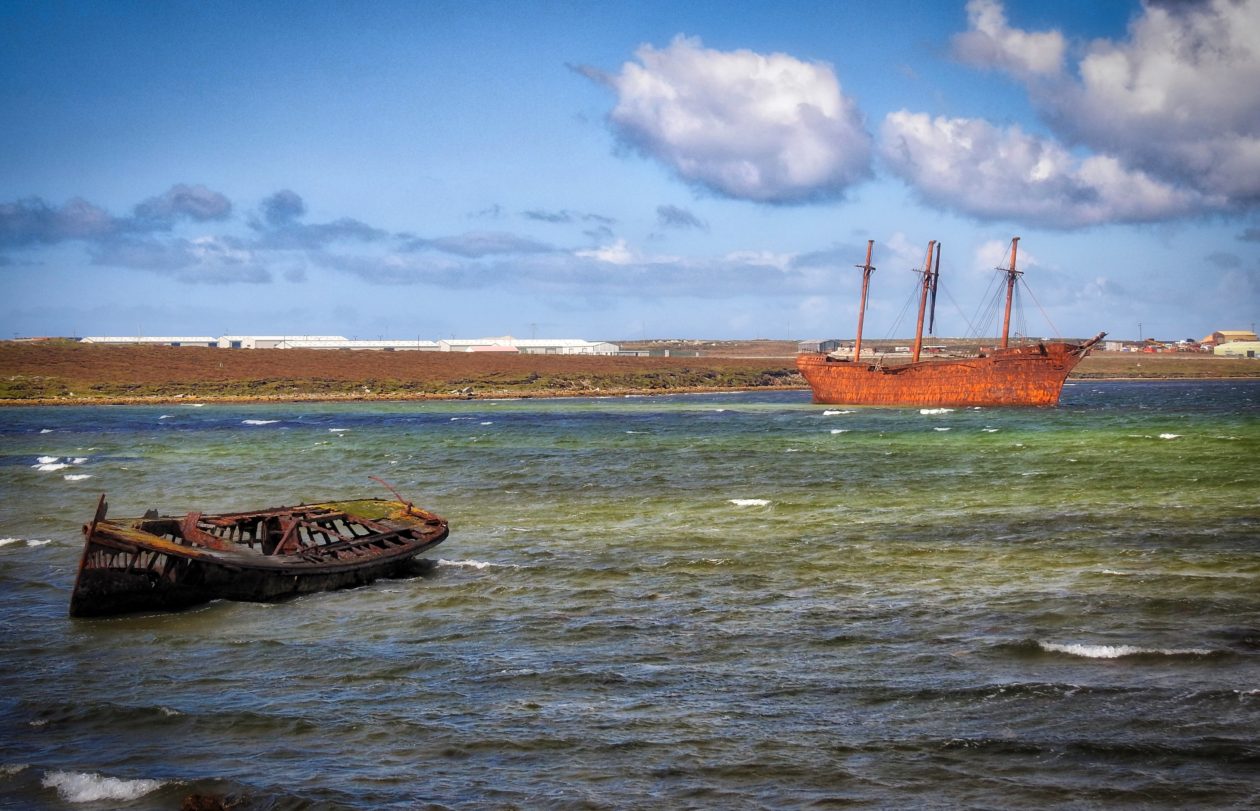
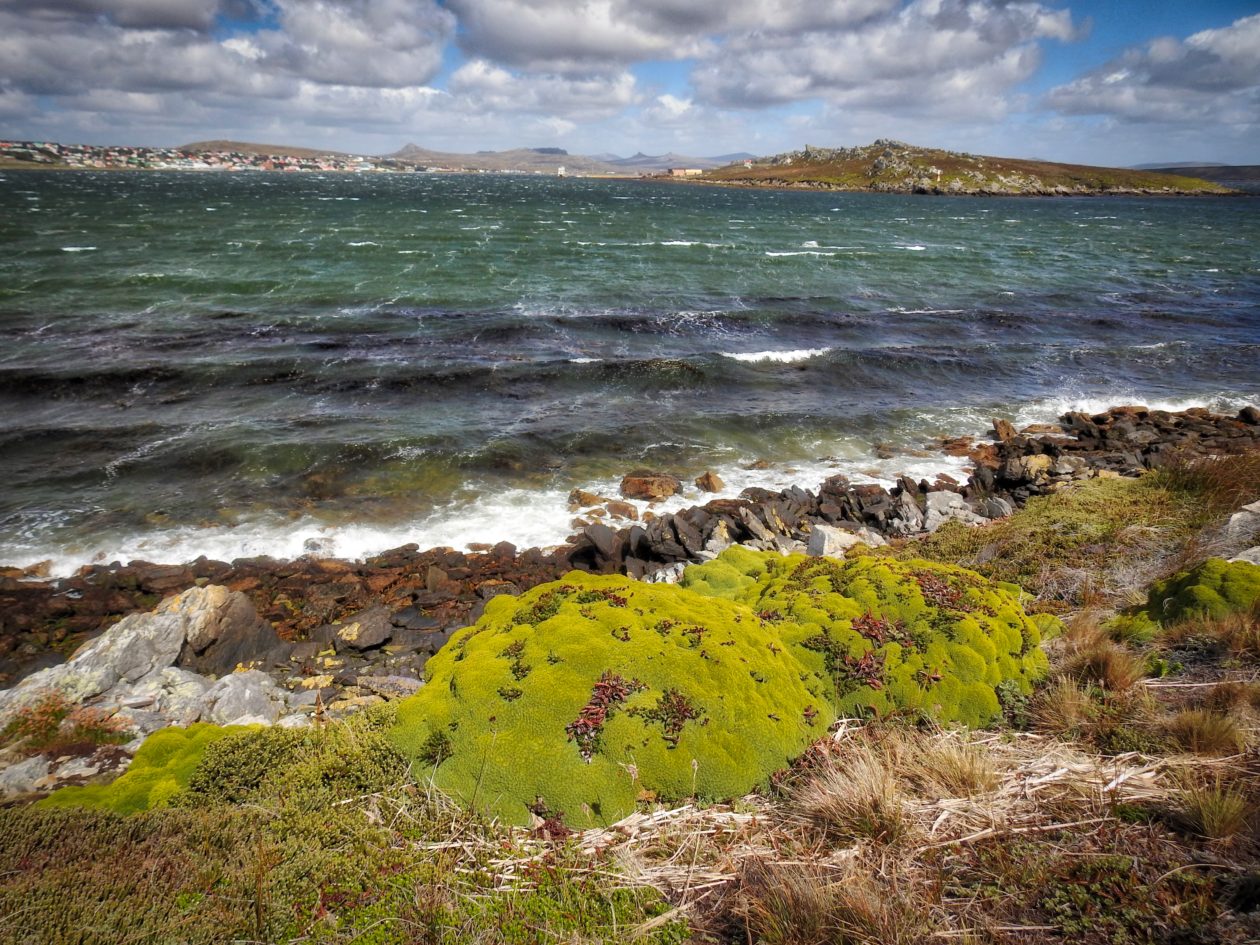
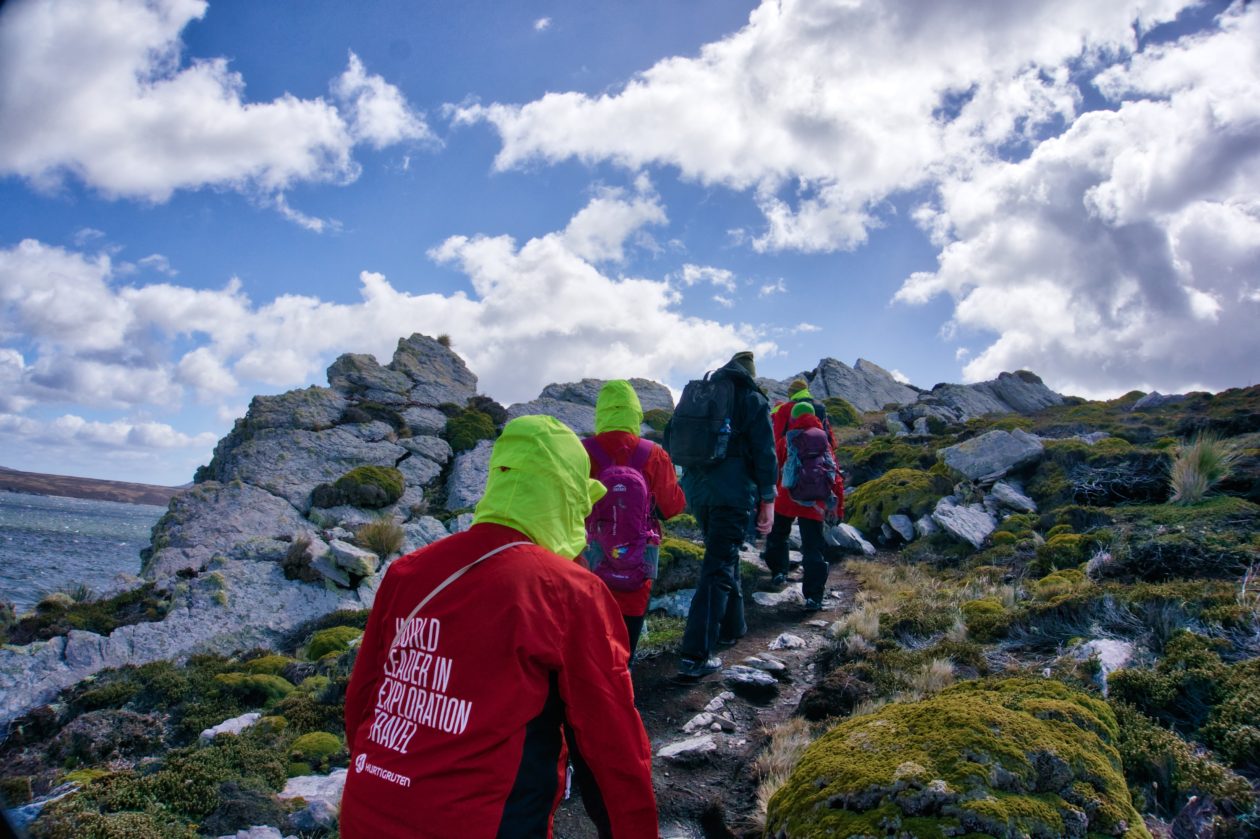
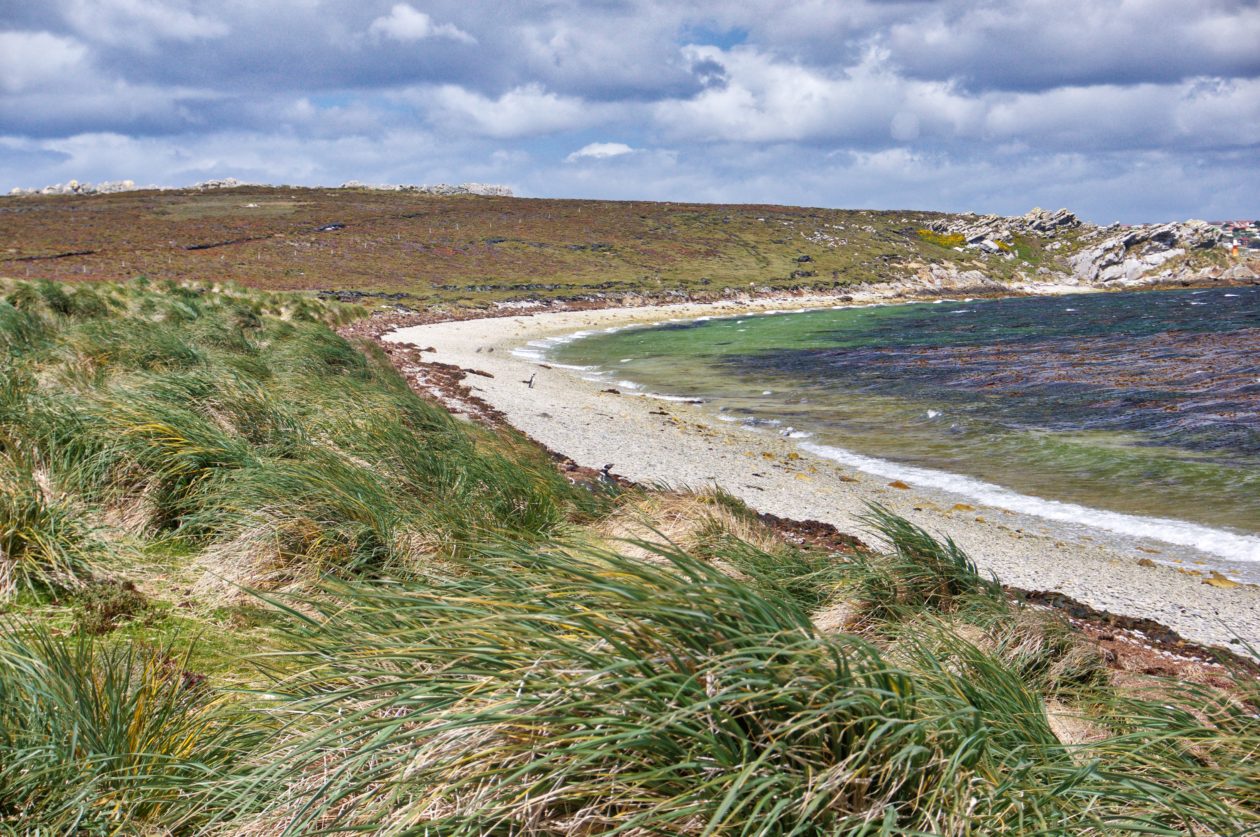
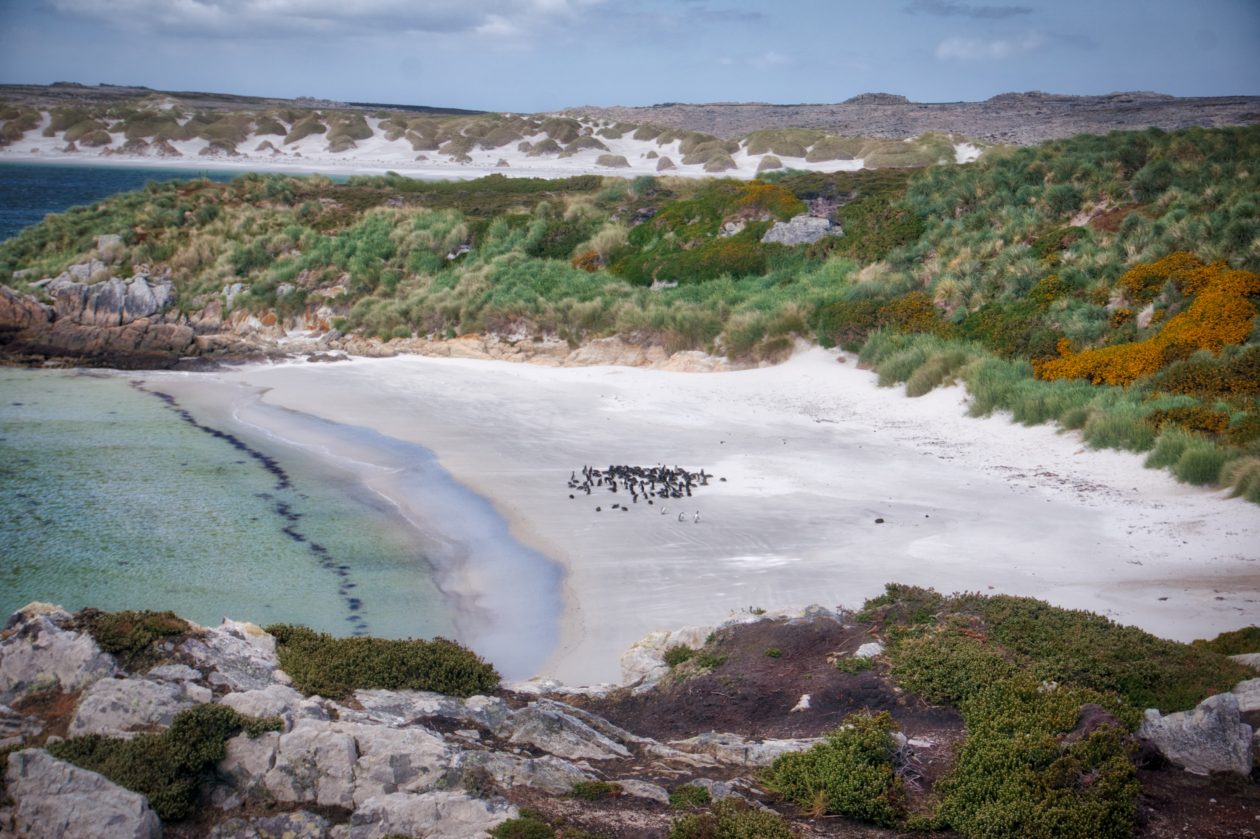
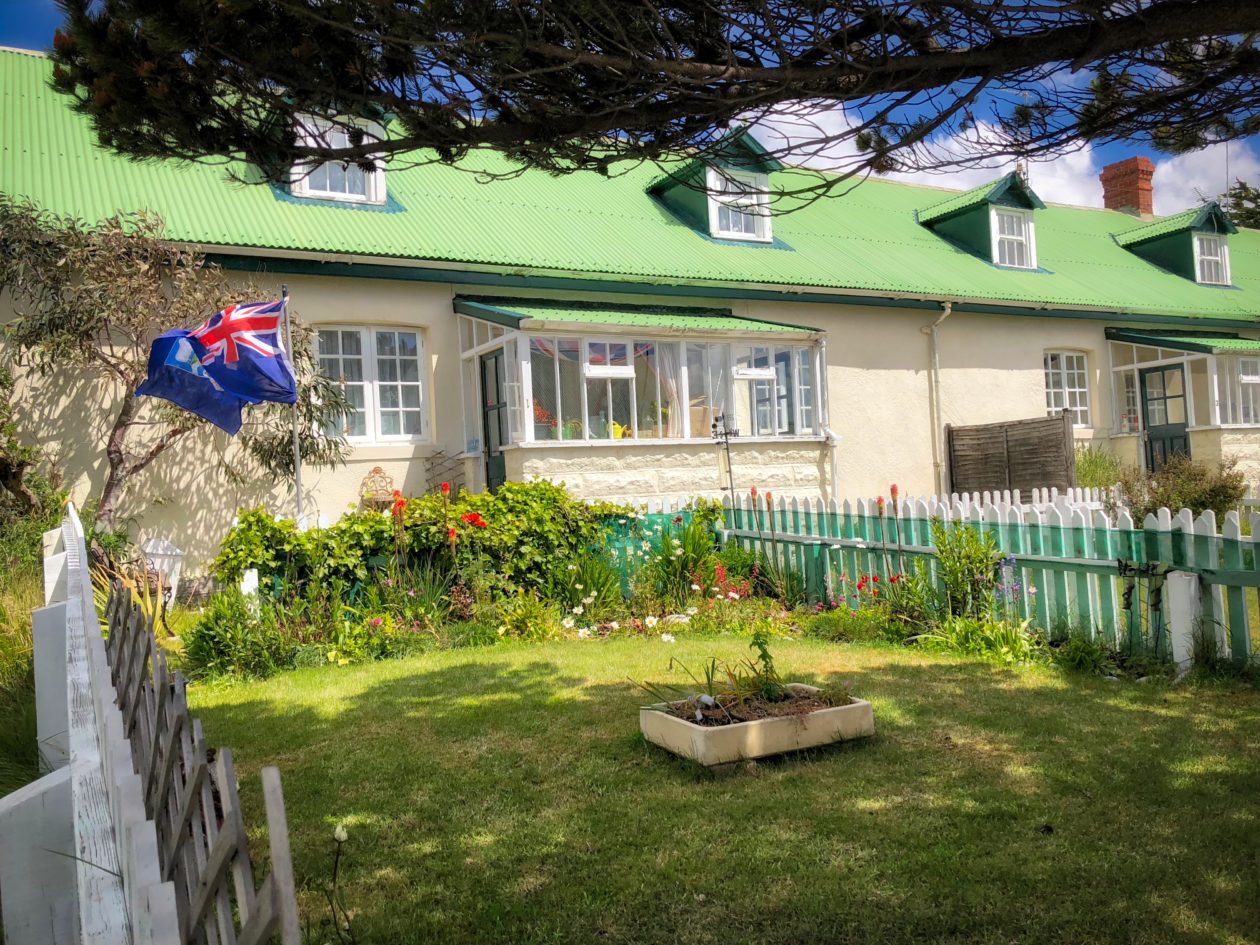
We are currently on our way to South Georgia Island, where we will spend three days exploring. For Deb, this will be the highlight of the trip because of Ernest Shackleton‘s heroics to get there and save his men who were stranded in the Antarctic Region.
